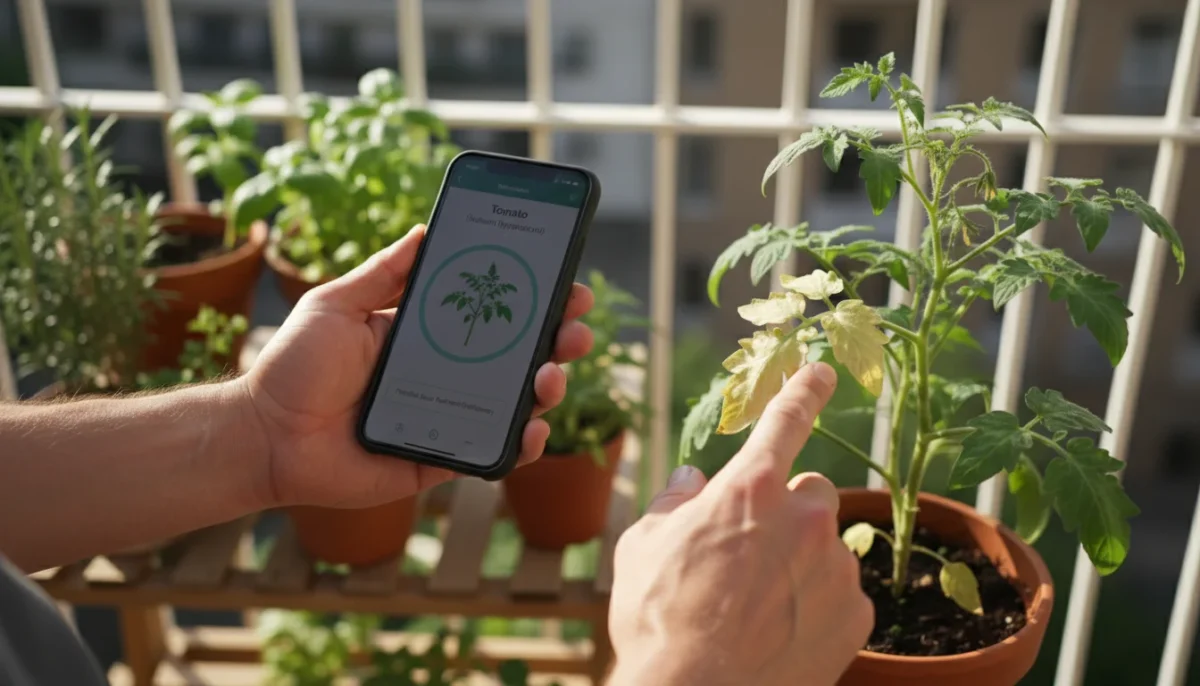Gardening in small spaces like balconies, patios, or compact yards presents unique joys and challenges. You nurture life in a contained environment, maximizing every inch and drop of water. This means you need efficiency, precision, and reliable information. While traditional hand tools form the foundation of your gardening efforts, modern technology offers powerful allies, transforming how you understand your plants and their environment.
Today, you find a growing array of smart garden sensors and garden apps designed to simplify tasks, provide critical data, and even automate routines. These tools do not replace the joy of getting your hands dirty, but they empower you with insights previously reserved for large-scale operations. From identifying mystery plants to optimizing watering schedules, integrating the best gardening tech into your routine can lead to healthier plants and less guesswork. This guide explores the practical applications of these innovations, helping you choose compact, affordable options that genuinely enhance your small-space gardening experience. You will discover how to leverage these tools for better plant health, water conservation, and overall gardening success.
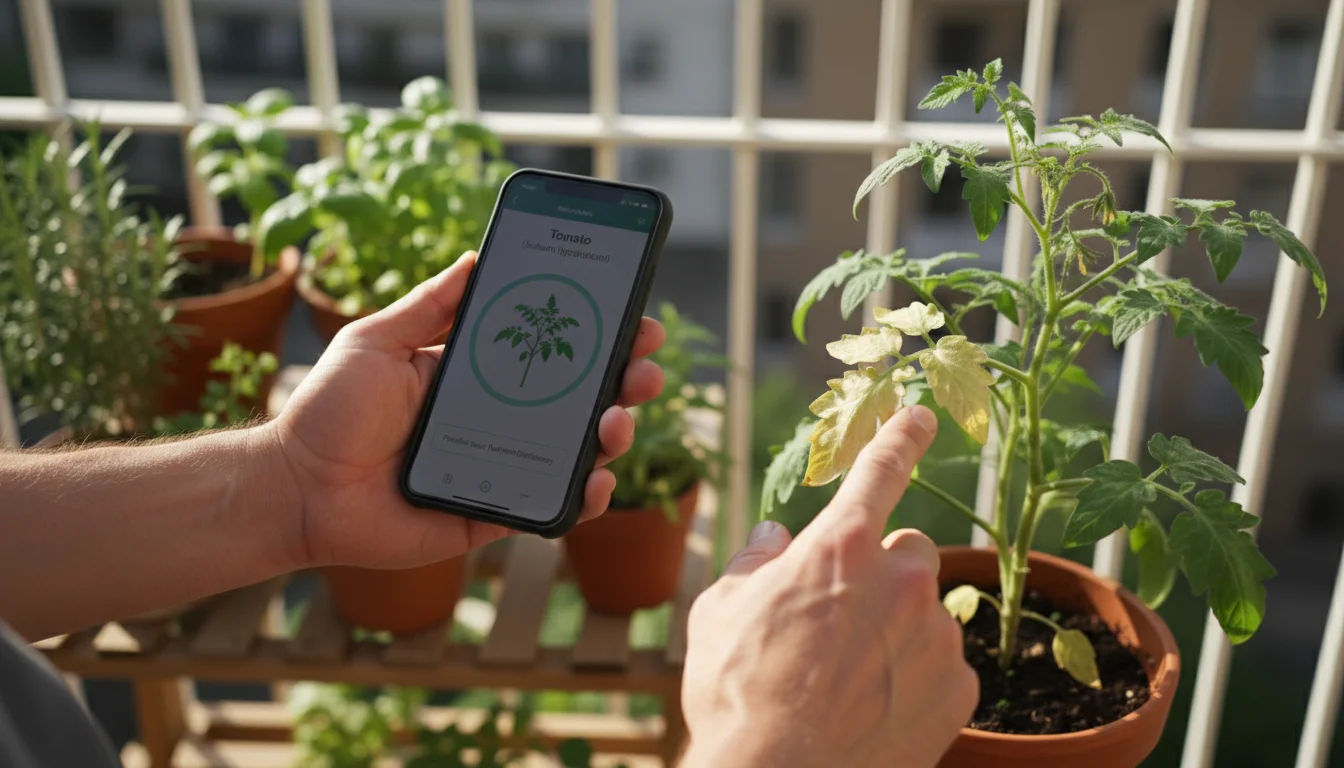
Essential Garden Apps for Small Spaces
Your smartphone is already a powerful tool. Transform it into a gardening assistant with the right garden apps. These digital companions offer immediate access to vast databases, expert advice, and personalized insights. They help you make informed decisions, especially when you are new to a plant or encounter an unfamiliar problem. Beginners and intermediates alike benefit significantly from these readily available resources.
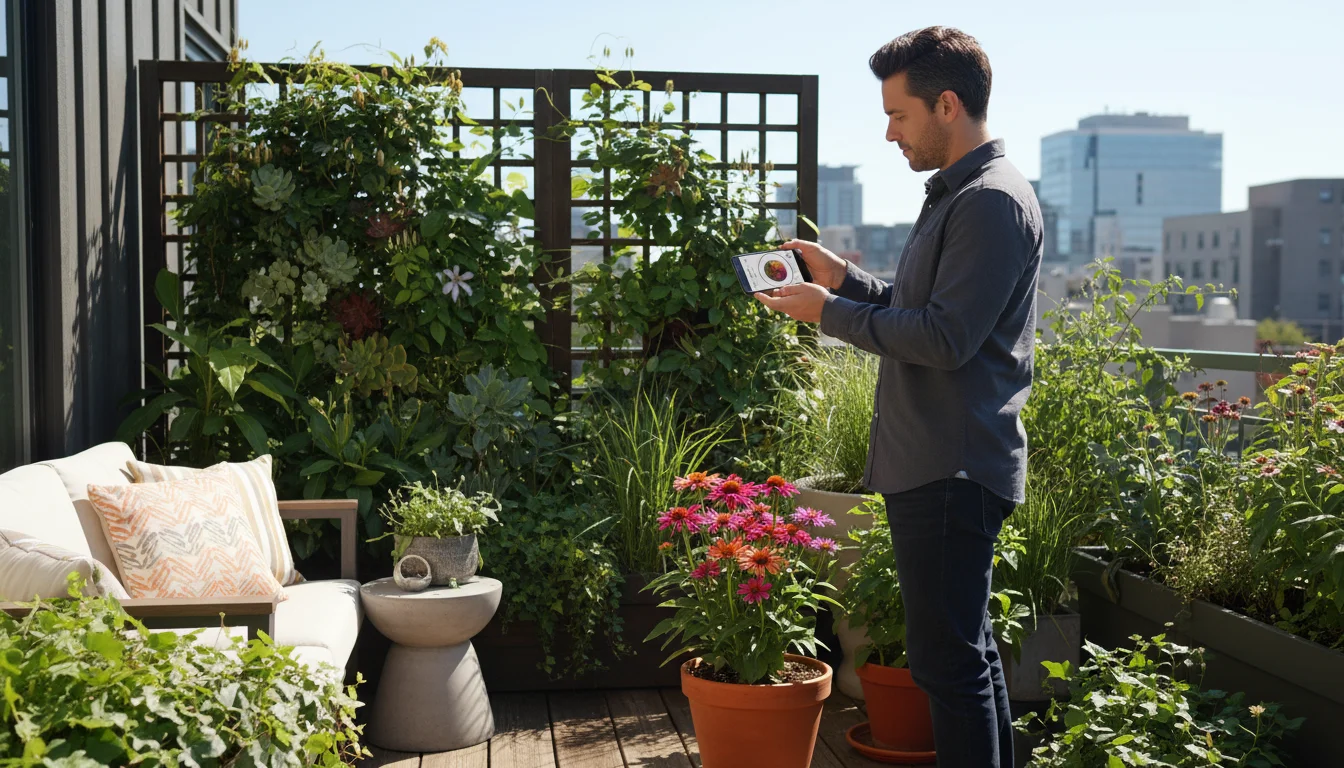
Plant Identification Apps
Imagine seeing a beautiful plant, either in a nursery or on a neighbor’s patio, and wishing you knew its name. Plant identification apps fulfill this need instantly. You simply take a picture of a leaf, flower, or overall plant, and the app uses image recognition technology to suggest possible matches. Many apps provide detailed information on care requirements, light needs, watering frequency, and potential pests. This means you can research a plant before bringing it home, ensuring it suits your small-space conditions. For example, you can confirm if a stunning perennial will thrive in a container on your sunny balcony or if it requires more shade and ground space than you possess.
When selecting a plant identification app, look for features such as a large, regularly updated database, community forums for peer support, and offline access for when you lack an internet connection in your garden. Some popular options offer free basic identification with premium features for advanced diagnostics. Consider how often you encounter unknown plants and if the additional features justify a subscription.
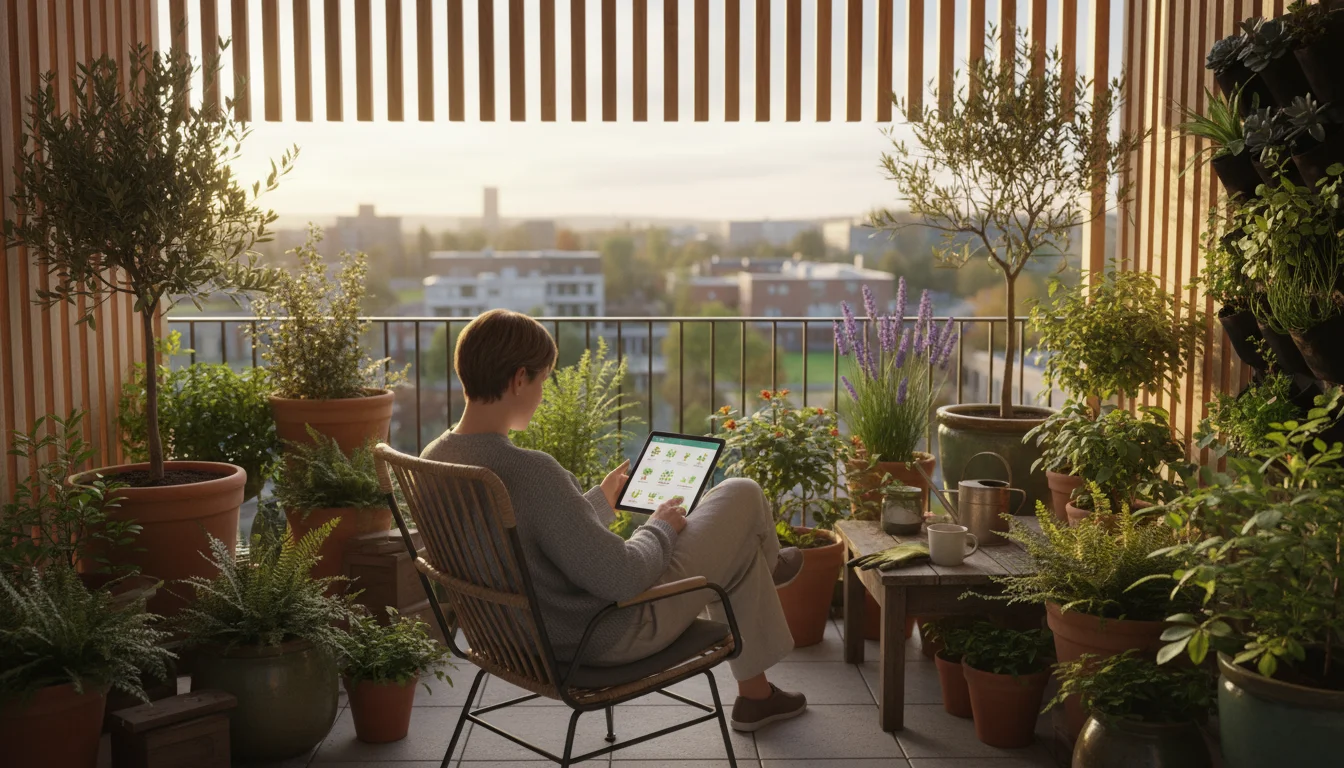
Garden Planning and Journaling Apps
Successful small-space gardening requires planning. Every square inch counts, and optimizing plant placement for light and companion planting benefits your harvest. Garden planning apps allow you to digitally design your garden layout, even creating virtual container gardens. You drag and drop plants into your design, viewing their mature sizes and potential shade patterns. This helps you avoid overcrowding and ensures each plant receives adequate sunlight. Some apps even track crop rotation, advising you on where to plant certain vegetables next season to maintain soil health.
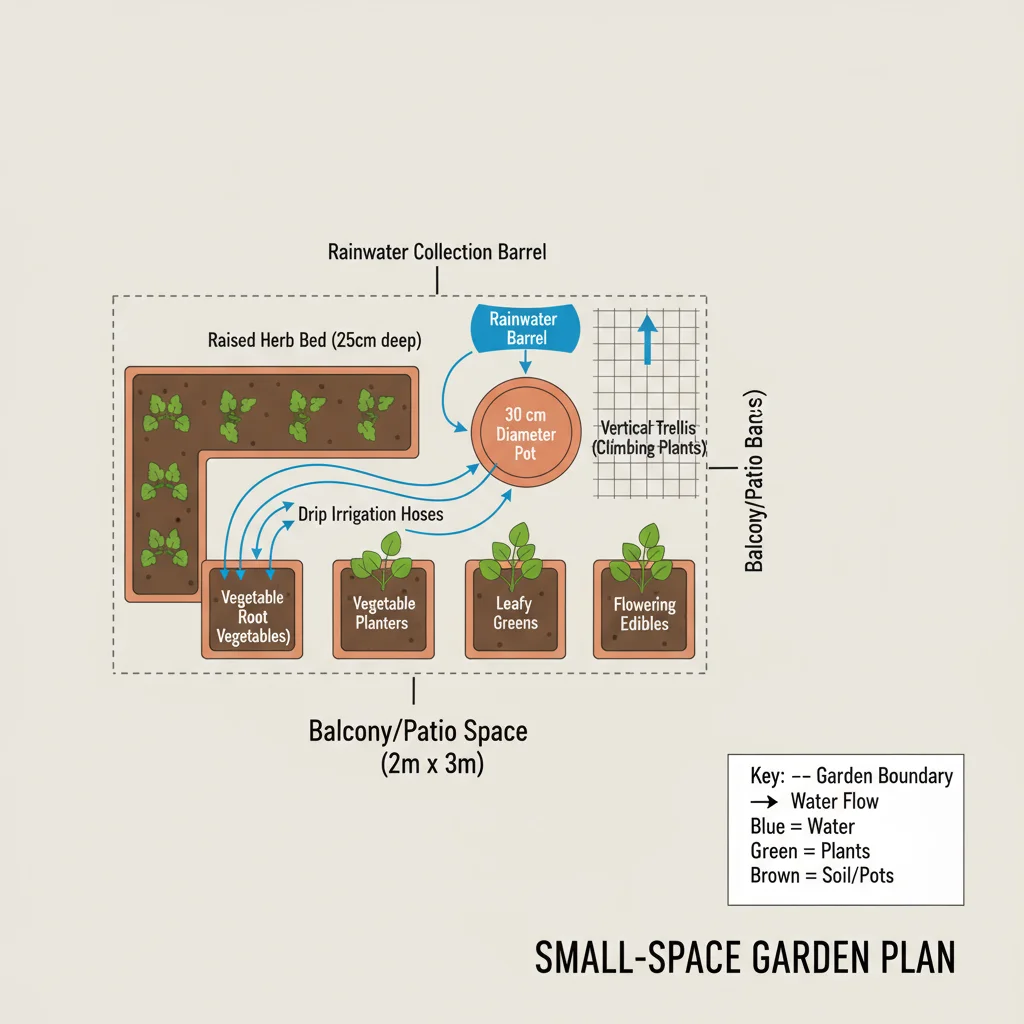
Journaling features within these apps help you record crucial information. Document planting dates, fertilizer applications, pest sightings, and harvest yields. This data becomes invaluable over time, enabling you to identify successful growing patterns and learn from past mistakes. For instance, if your patio tomatoes consistently underperform in a specific spot, your journal might reveal inadequate sunlight or persistent pest issues in that location. This historical data helps you refine your strategy year after year. For gardeners utilizing limited space, understanding these patterns is key to maximizing productivity.
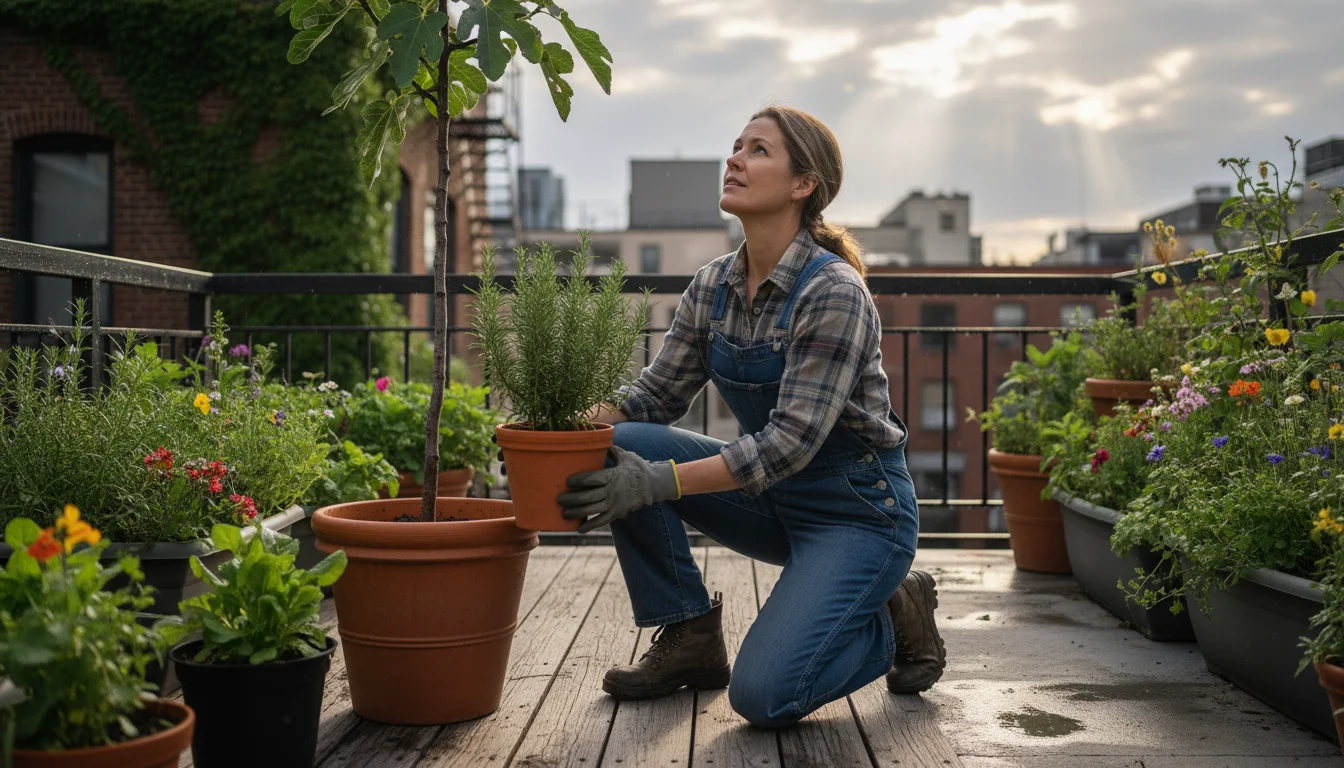
Weather Tracking and Plant Care Reminder Apps
Understanding local weather patterns is fundamental to healthy gardening. While you check the forecast, specialized gardening weather apps go a step further. They integrate hyper-local weather data with your plant’s specific needs. Some apps alert you to upcoming frost warnings, high heat advisories, or extended dry spells, prompting you to cover delicate plants or increase watering. This proactive approach prevents weather-related stress on your plants. For balcony gardeners, knowing about strong winds can also be crucial, allowing you to secure pots or move plants to a sheltered spot.
Plant care reminder apps ensure you never forget to water, fertilize, or prune. You input your plants, set their individual care schedules, and the app sends timely notifications. This proves particularly useful for gardeners with many different plants, each with unique requirements. Imagine you have succulents that need infrequent watering and thirsty annuals that require daily attention. The app keeps track of it all, eliminating the need for mental checklists. This consistent care translates directly to healthier, more robust plants. The convenience these apps offer frees up your mental energy, allowing you to focus on enjoying your garden.
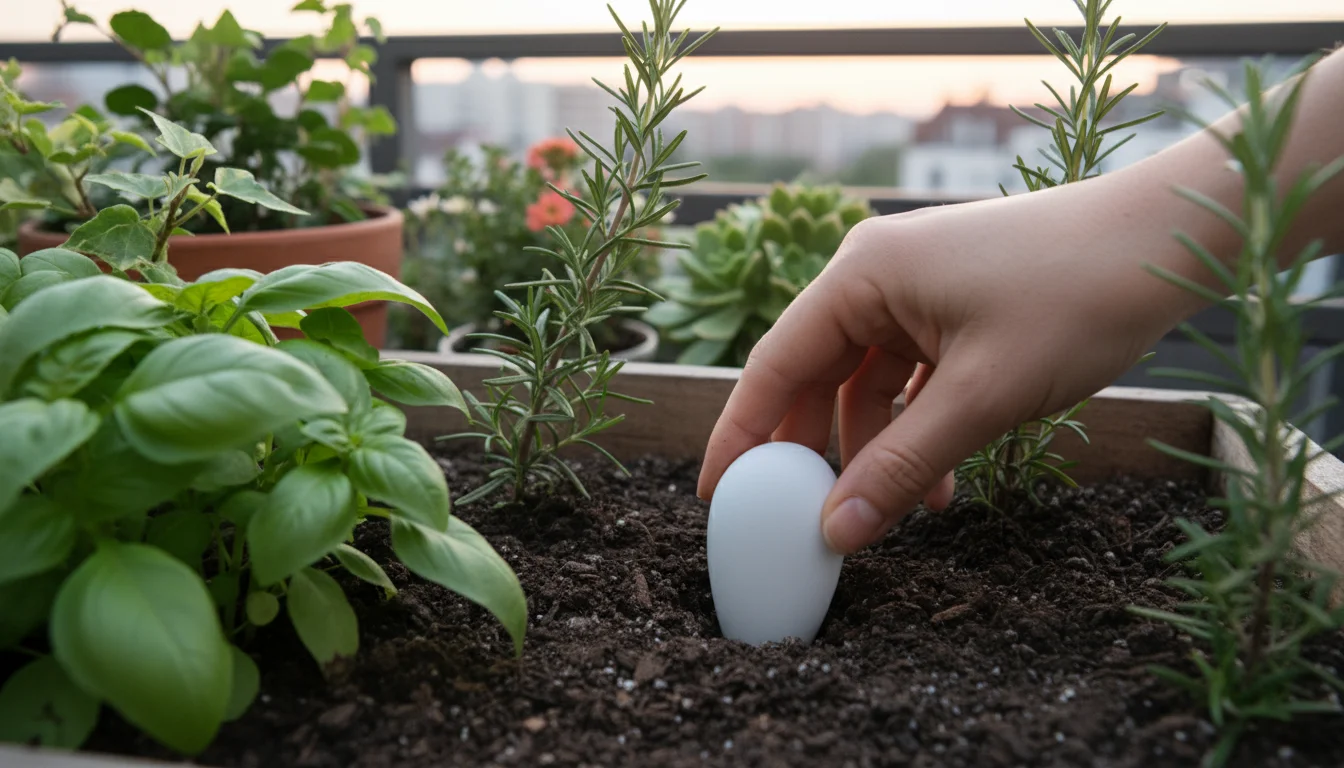
Smart Watering Solutions: Sensors and Controllers
Water is a precious resource, especially in container gardening where soil can dry out quickly. Efficient watering is not just about conservation; it is about providing your plants with exactly what they need, when they need it, preventing both underwatering and overwatering. Smart garden sensors and smart irrigation controllers revolutionize how you manage water in your small garden, reducing waste and improving plant health.
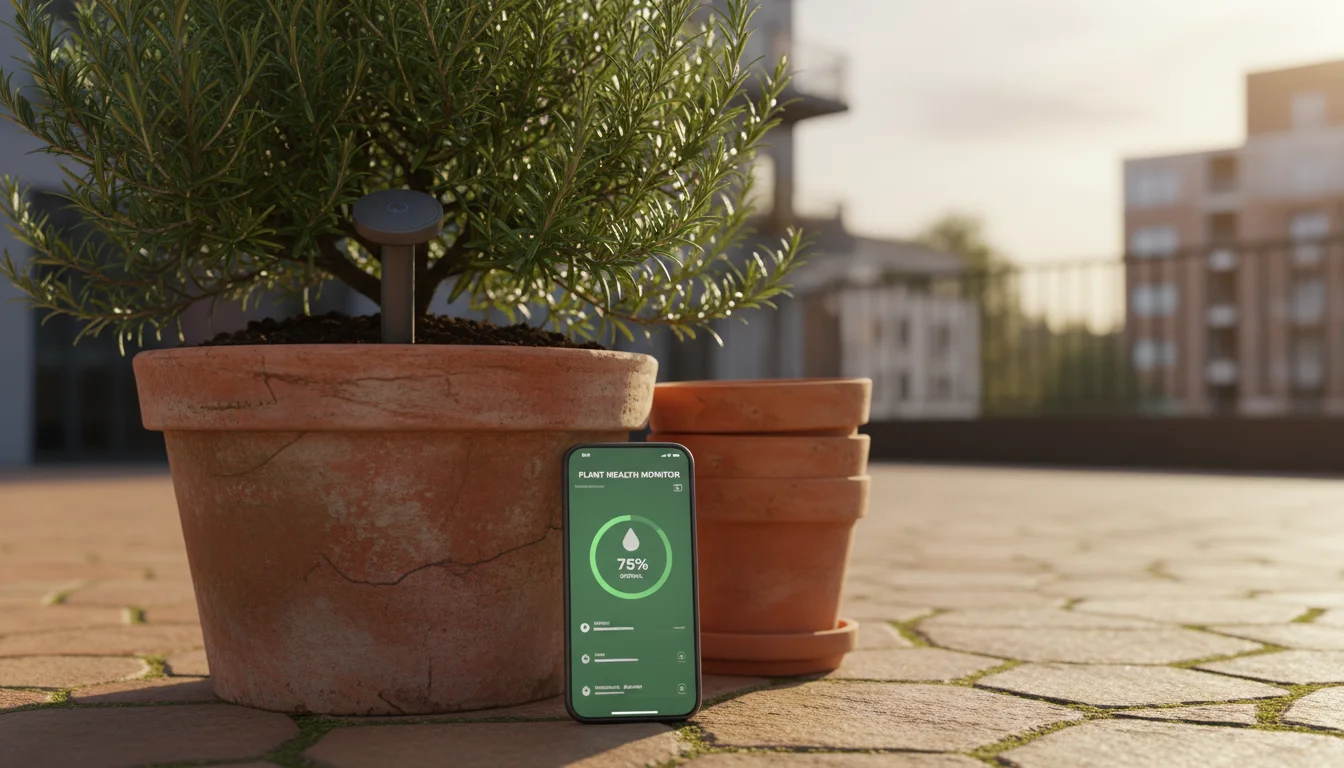
Soil Moisture Sensors
A soil moisture sensor measures the water content in your soil. These small devices, often probes you insert directly into the potting mix, send data to an app on your phone or a smart controller. Instead of guessing if your plant needs water, or sticking your finger in the soil, you receive precise, real-time information. This data tells you exactly when the soil moisture drops below an optimal level, triggering a notification or even an automatic watering cycle if linked to a smart controller.
For container gardeners, soil moisture sensors are invaluable. Pots dry out at different rates depending on their material, plant size, sunlight exposure, and ambient temperature. A terracotta pot in full sun might need daily watering, while a plastic pot in partial shade might only need water every few days. Sensors eliminate the guesswork, preventing the common pitfalls of overwatering, which leads to root rot, or underwatering, which causes stress and wilting. By reacting to actual soil conditions, you save water and ensure your plants receive consistent, appropriate hydration.
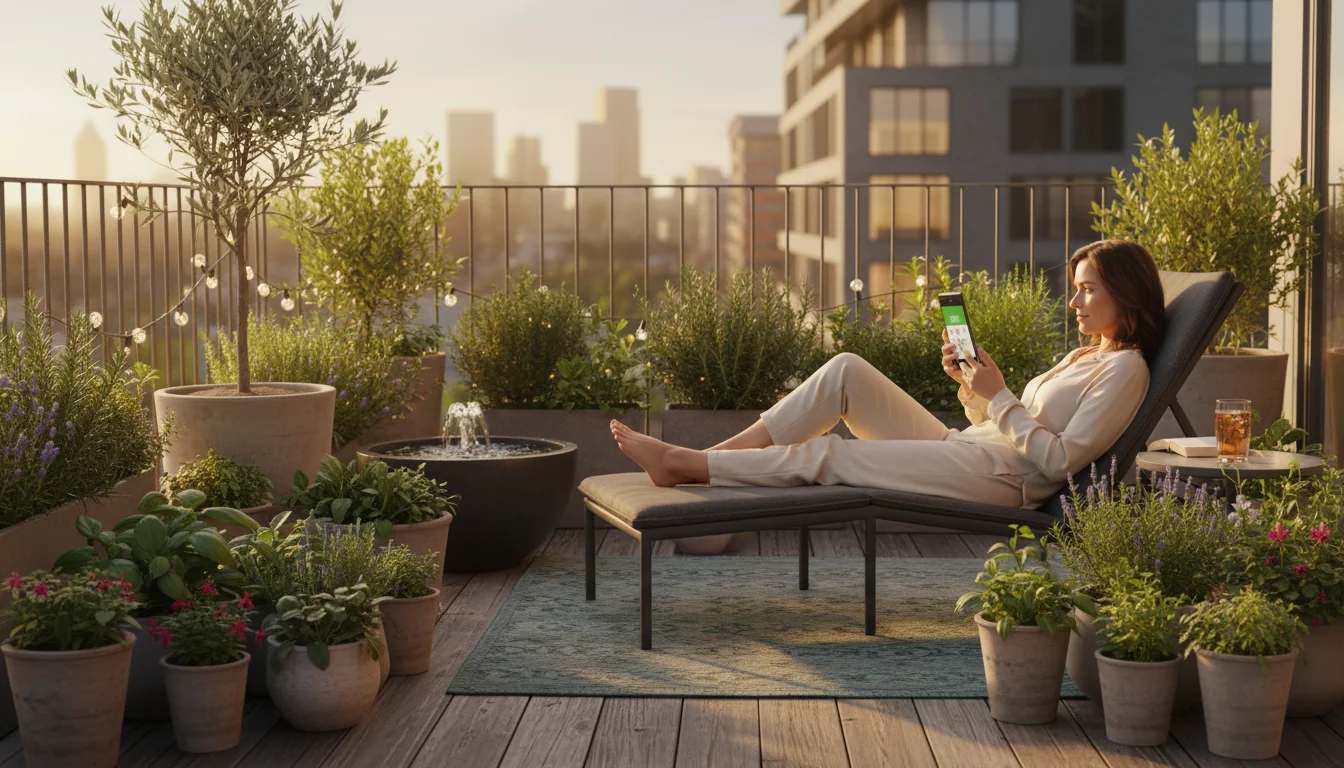
Rain Sensors and Smart Irrigation Controllers
While soil moisture sensors focus on individual plant needs, rain sensors and smart irrigation controllers manage overall watering schedules. A rain sensor detects rainfall and communicates with your irrigation system or smart controller, preventing unnecessary watering cycles. If it rains, your system pauses, conserving water and preventing waterlogged plants.
Smart irrigation controllers take this a step further. They connect to your home Wi-Fi and use hyper-local weather forecasts, historical data, and even data from your soil moisture sensors to create dynamic watering schedules. You can program zones, set plant types, and the controller adjusts watering duration and frequency automatically. For a small balcony garden with a micro-drip system, a smart controller can manage different zones for thirsty annuals versus drought-tolerant herbs, ensuring each section receives tailored irrigation. You control and monitor your watering from an app, adjusting schedules remotely or simply trusting the system to optimize water use based on real-time conditions. This level of automation ensures consistency and significant water savings over time.
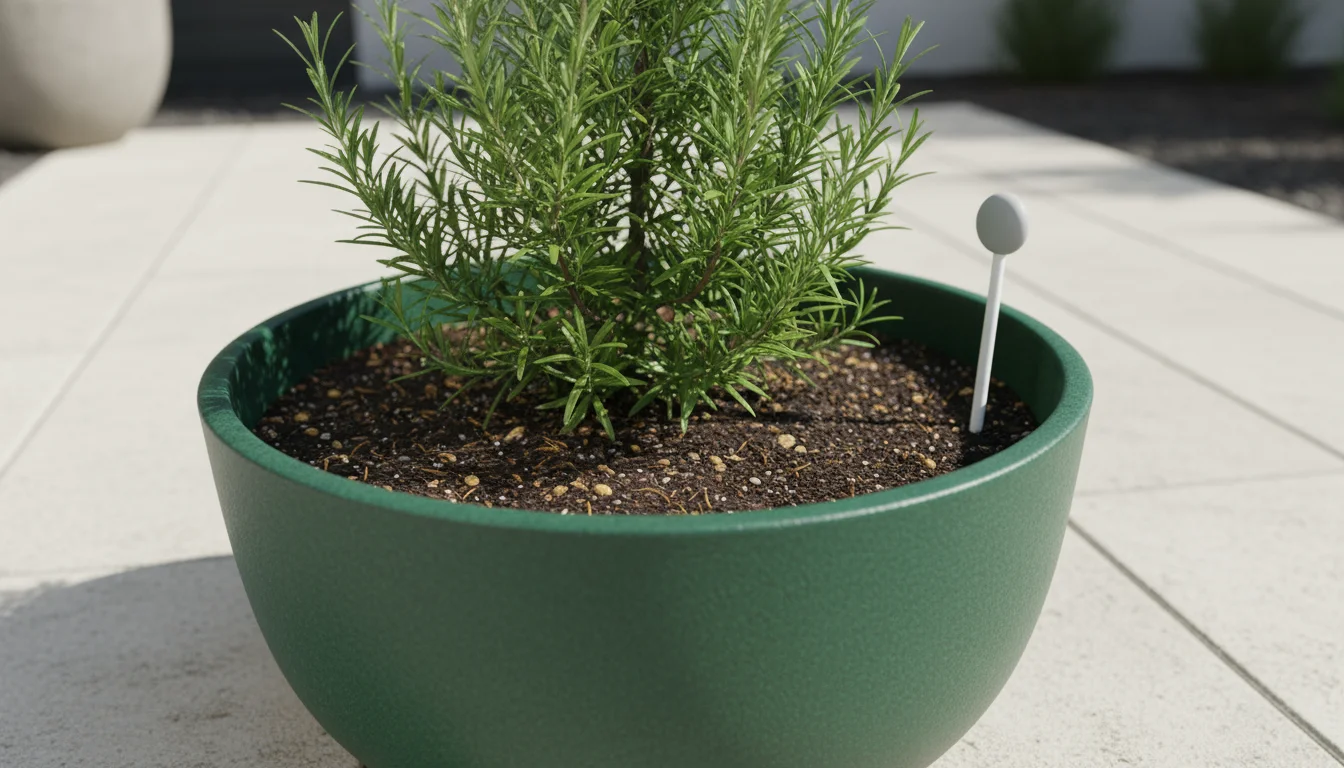
Decoding Your Soil: What Sensors Tell You
Soil is the foundation of your garden. Healthy soil supports vigorous plant growth, while nutrient deficiencies or imbalances can stunt development and invite disease. While a traditional soil test provides a comprehensive snapshot, smart garden sensors offer ongoing, localized insights into your potting mix or garden bed. These sensors provide immediate feedback, allowing you to make timely adjustments without waiting for lab results.
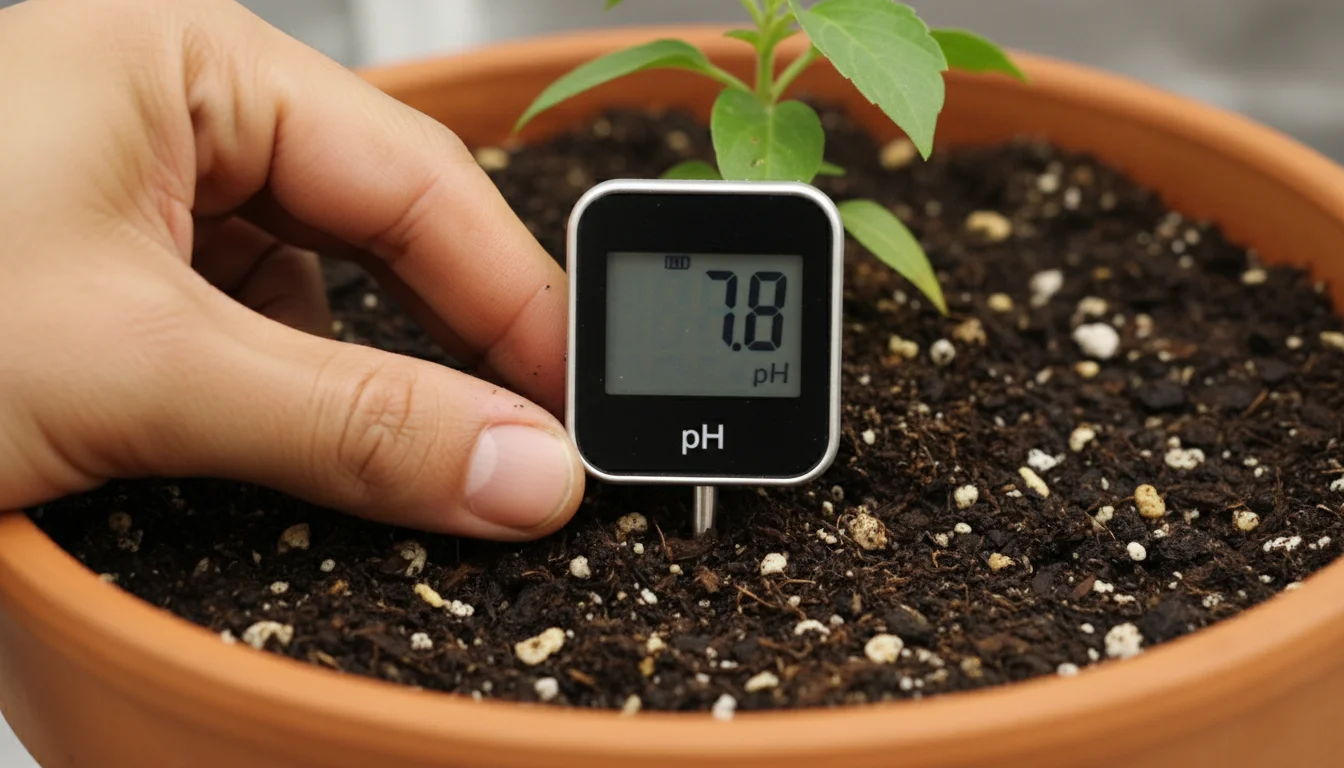
pH and Nutrient Sensors
Many plants thrive within a specific pH range, which measures soil acidity or alkalinity. For instance, blueberries prefer acidic soil, while lavender thrives in alkaline conditions. pH sensors provide real-time readings, allowing you to monitor and adjust your soil pH as needed. If your sensor indicates your soil is too acidic for your planned crop, you can amend it with lime to raise the pH. Conversely, if it is too alkaline, adding peat moss or elemental sulfur can lower it. Maintaining the correct pH ensures your plants can access the essential nutrients present in the soil. Without this balance, nutrients can become “locked up,” even if they exist in abundance.
Some advanced sensors also measure macronutrients like Nitrogen (N), Phosphorus (P), and Potassium (K), which are vital for plant growth. Nitrogen promotes leafy growth, phosphorus supports root and flower development, and potassium aids overall plant vigor and disease resistance. While not as precise as a lab test, these NPK sensors provide general indicators, alerting you to potential major deficiencies. If your sensor consistently shows low nitrogen, for example, you know to consider a nitrogen-rich fertilizer or compost application. This immediate feedback enables you to respond quickly to your plant’s nutritional needs, preventing prolonged stress or poor harvests.
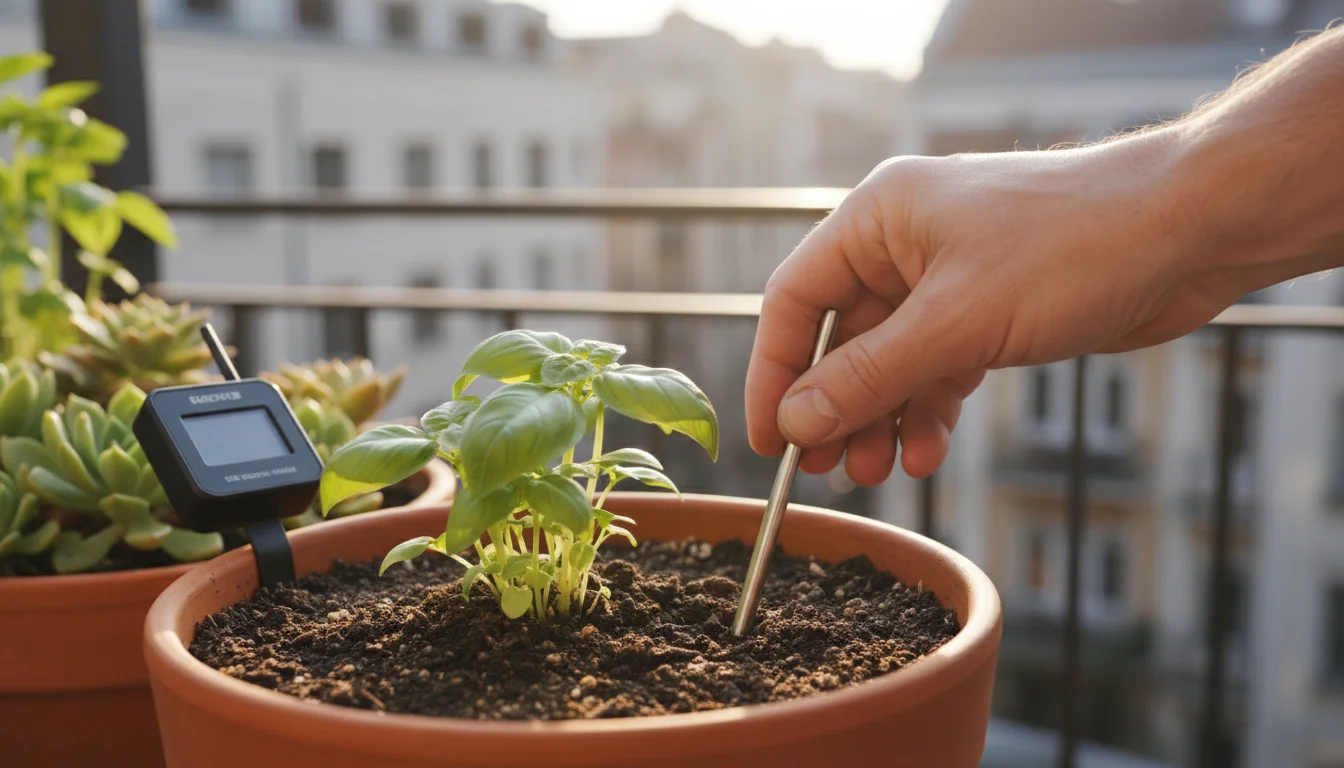
Soil Temperature and Light Sensors
Beyond pH and nutrients, soil temperature and light availability significantly impact plant health. Soil temperature influences seed germination, root growth, and nutrient uptake. Most plants have optimal soil temperature ranges for different stages of their life cycle. A soil temperature sensor helps you decide when to plant seeds or transplants. Planting too early into cold soil can stunt growth or lead to rot, while planting too late into overly warm soil can stress cool-season crops. Monitoring soil temperature ensures you plant at the most opportune time, promoting robust early development.
Light sensors measure the intensity and duration of sunlight your plants receive. This is especially critical in small spaces where buildings, fences, or other structures can cast shadows throughout the day. You might assume a spot gets “full sun,” but a light sensor can confirm if it truly receives the 6+ hours of direct sunlight required for many vegetables. If the sensor reveals insufficient light, you might need to move containers, choose different plant varieties better suited for shade, or explore supplemental lighting options. Accurate light data helps you match the right plant to the right place, maximizing its potential. You can also use this data to rotate plants, ensuring even growth.
For more detailed information on soil testing and amendments, consult resources such as the
USDA’s Natural Resources Conservation Service,
which offers extensive guides on soil health principles.
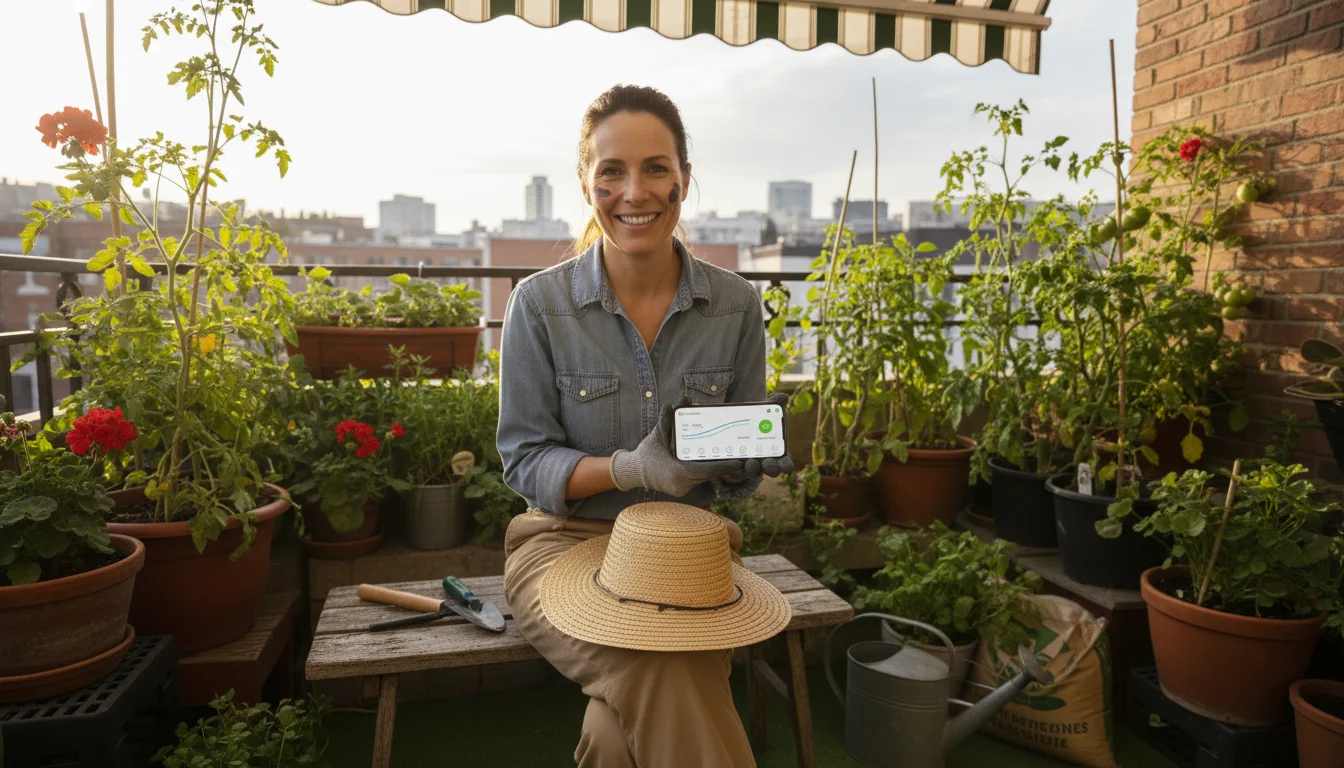
Advanced Plant Health Monitoring
Traditional plant health monitoring relies on your eyes, looking for yellowing leaves, spots, or wilting. While direct observation remains crucial, technology offers additional layers of insight, helping you catch problems earlier and understand underlying causes. Advanced garden tech acts as an early warning system, allowing you to intervene before issues become severe.
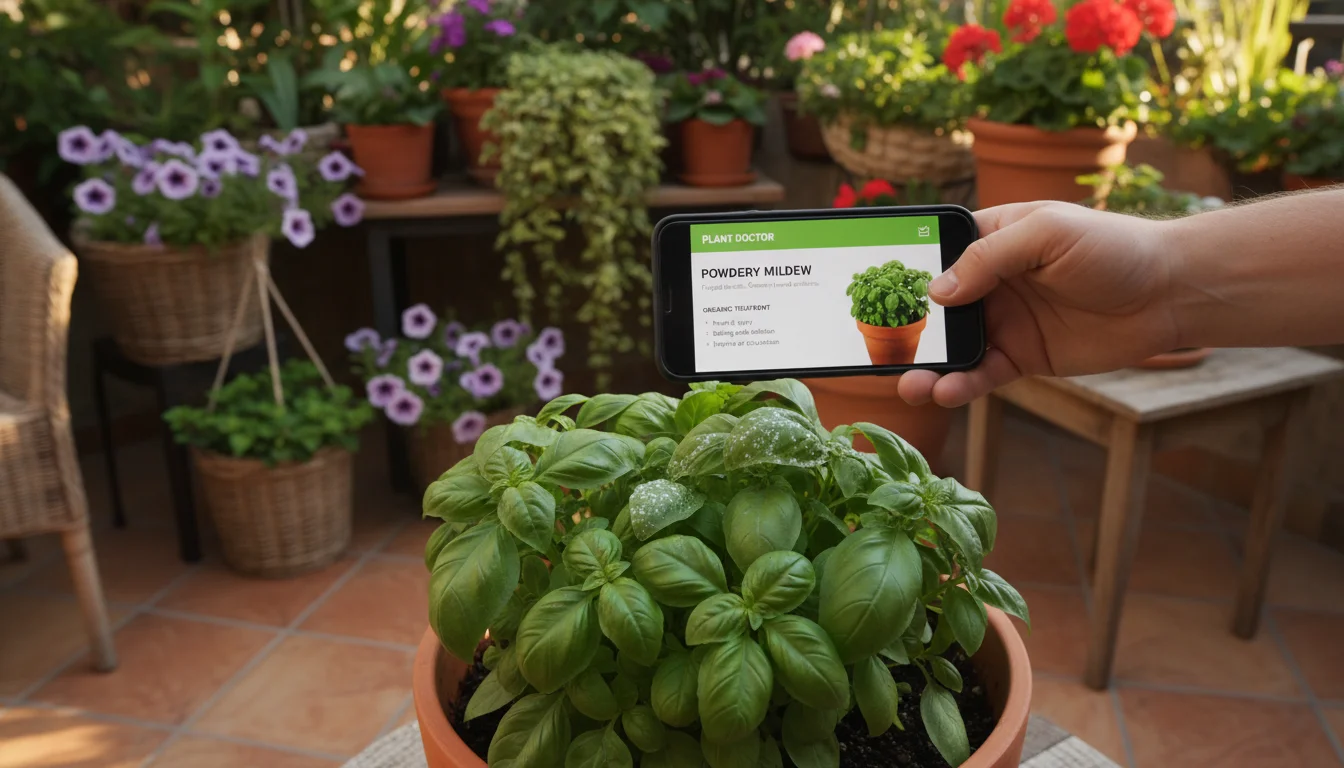
Disease and Pest Identification Apps
Identifying plant diseases and pests quickly saves your plants. Many garden apps specialize in this area. Similar to plant identification, you upload photos of affected leaves, stems, or pests. The app uses AI to analyze the images and suggest potential diseases or pests. It then provides information on symptoms, life cycles, and most importantly, organic and chemical treatment options. For example, if you notice tiny white spots on your basil, an app might quickly identify powdery mildew and recommend an organic fungicidal spray or improved air circulation.
The benefit here is speed and access to a vast knowledge base. Instead of spending hours sifting through gardening forums, you get instant, actionable advice. These apps empower you to act decisively, which is critical in small spaces where pests and diseases can spread rapidly from one plant to another. You protect your entire container garden by addressing localized outbreaks promptly.
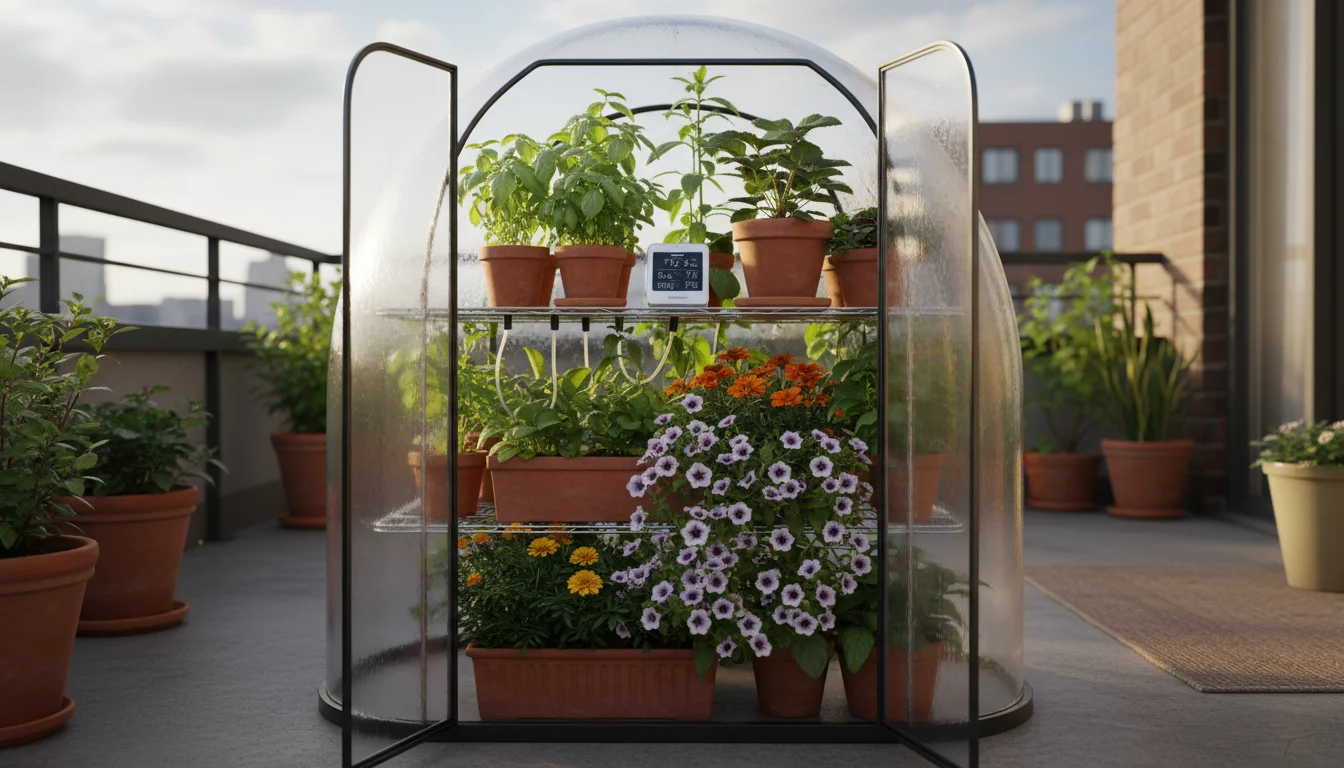
Environmental Sensors for Climate Control
While often associated with greenhouses, compact environmental sensors find application in sheltered balconies or mini-greenhouses. These sensors monitor ambient air temperature and humidity. High humidity can encourage fungal diseases, while extreme temperature swings stress plants. By tracking these factors, you can take preventative measures. If humidity levels consistently stay high, you might increase air circulation by strategically placing plants or adding a small fan. If temperatures regularly drop too low at night, you can use row covers or move sensitive plants indoors.
Some systems integrate these sensors with automated vents or misters, maintaining optimal microclimates. While full automation might be overkill for a single patio container, knowing the specific environmental conditions helps you understand why a plant thrives or struggles. For example, if your sensor shows high afternoon temperatures on your balcony, you know to provide afternoon shade for heat-sensitive plants. This proactive approach supports robust growth and prevents environmental stress from becoming a major issue.
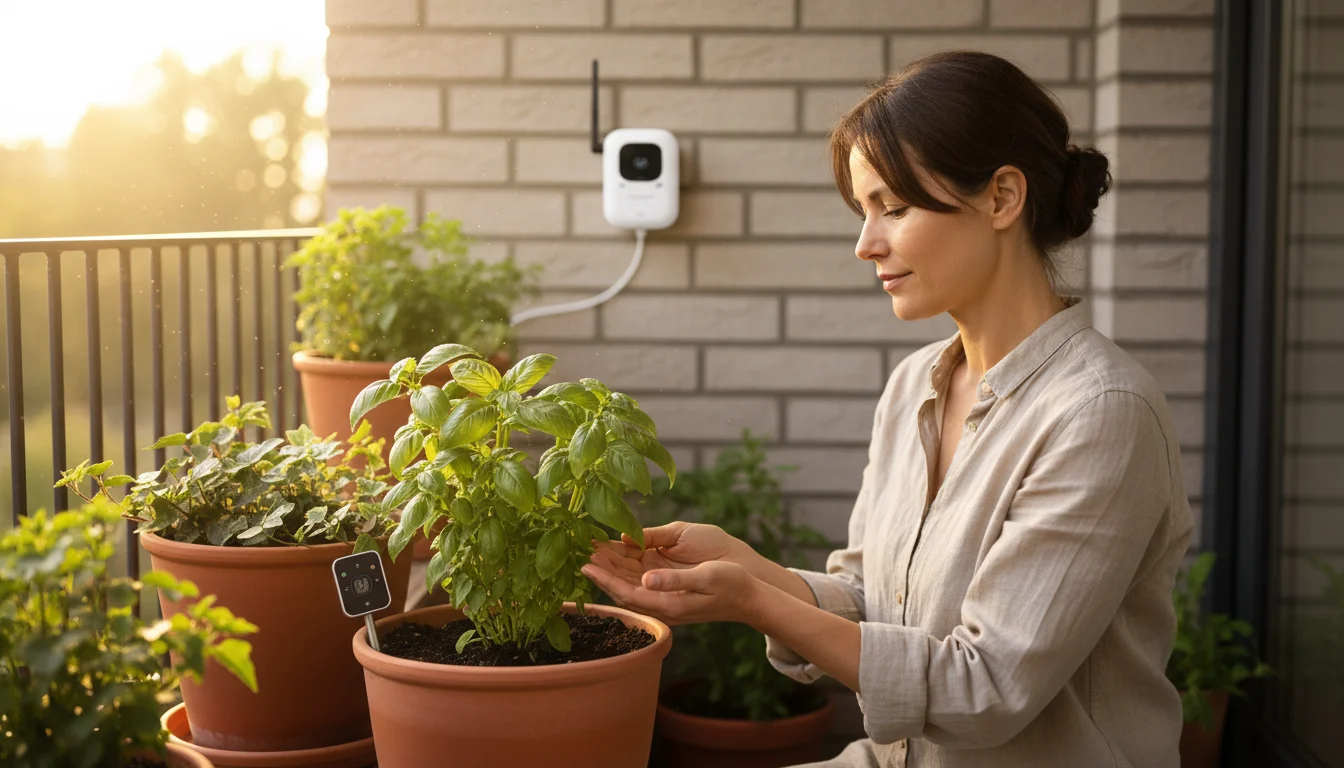
Power or Patience? Balancing Tech with Hands-On Gardening
Integrating technology into your garden does not mean sacrificing the tactile, mindful experience of gardening. Instead, it means augmenting your efforts with data and automation where it makes sense. The choice between manual methods and smart tech often comes down to balancing convenience, cost, and your personal gardening philosophy. You do not need to automate everything; select tools that address your biggest challenges and enhance your enjoyment.
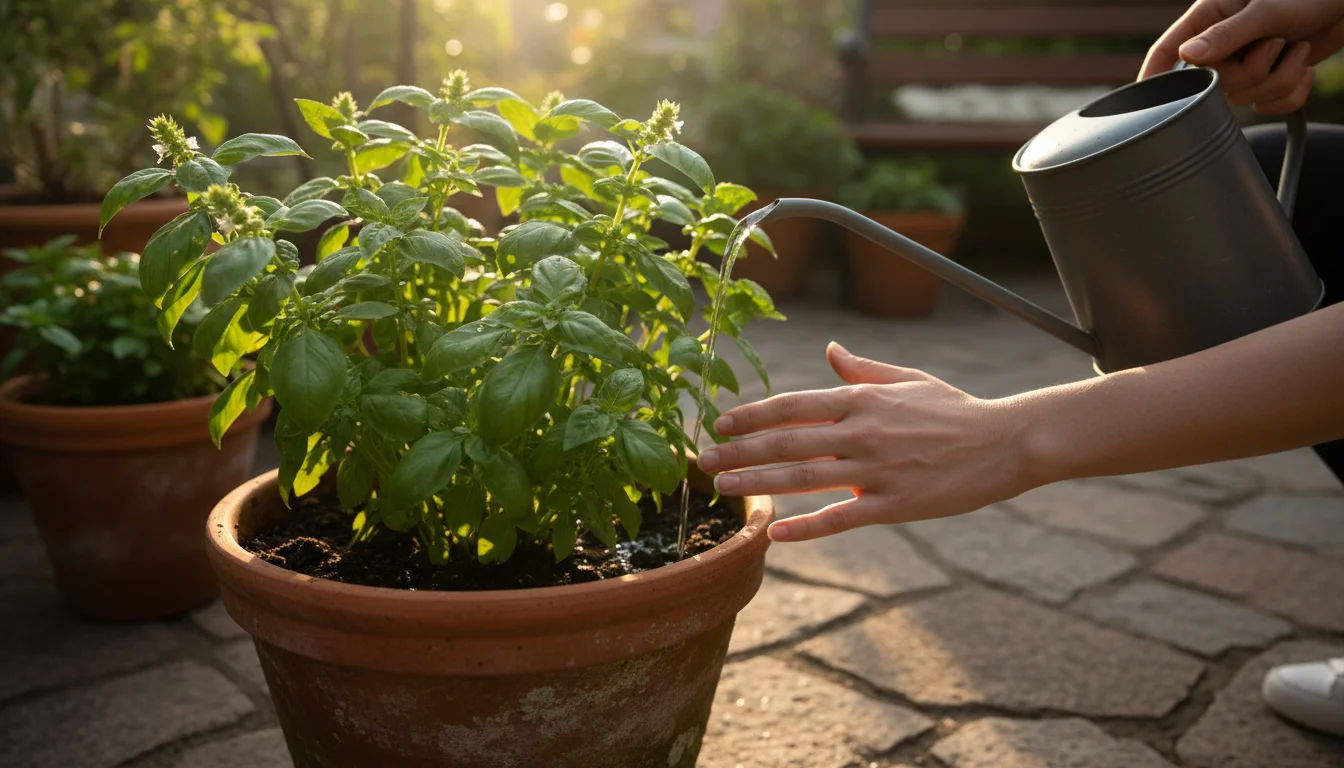
When Manual is Best
Many aspects of small-space gardening remain best done by hand, fostering a deeper connection with your plants. Hand-watering allows you to observe each plant individually, feeling the soil, inspecting leaves for pests, and appreciating its growth. Manual weeding by hand ensures you remove unwanted plants without disturbing delicate roots nearby. Pruning with bypass pruners, which use two curved blades that slice cleanly through live stems, requires a precise eye and a steady hand, promoting plant health and shaping. These hands-on activities are meditative, engaging your senses, and building your intuitive gardening knowledge. For example, you learn to recognize the subtle signs of thirst in your basil long before a sensor might alert you. Small-space gardeners often embrace this intentionality, finding joy in the direct interaction with their plants.
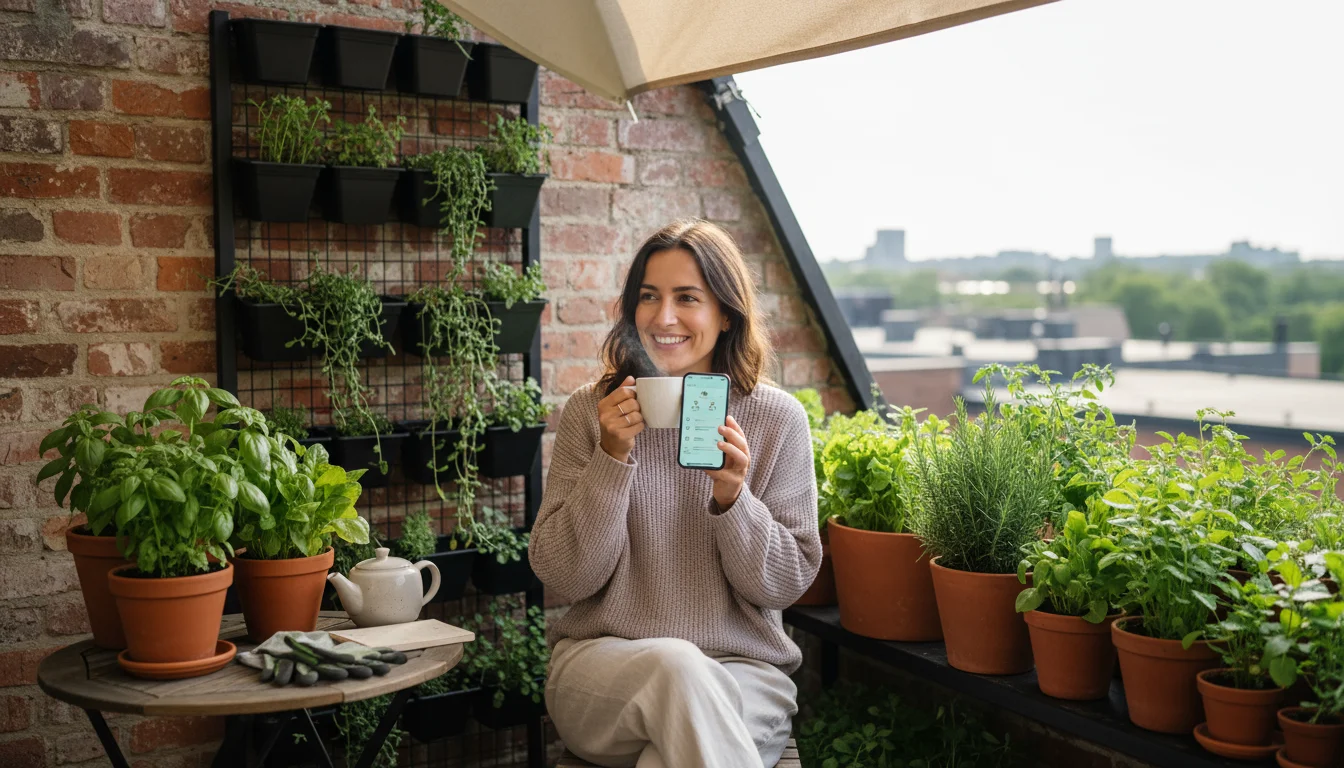
When to Embrace Smart Tech
Smart tech shines when it solves repetitive problems, provides crucial data you cannot easily gather otherwise, or offers convenience for busy gardeners. If you frequently forget to water, leading to stressed plants, a smart watering system with soil moisture sensors can be a game-changer. If you struggle to identify diseases, a plant diagnostic app offers instant expertise. If you travel frequently, remote monitoring of your garden’s conditions provides peace of mind. Technology excels at consistency and data collection. It frees you from basic chores, allowing you more time for enjoyable activities like harvesting, pruning for shape, or simply relaxing in your green space. For example, knowing your soil pH through a sensor eliminates the need for repeated manual tests, allowing you to focus on adjusting amendments.
Consider your personal pain points and what aspects of gardening you find most challenging or time-consuming. A smart sensor for monitoring light might be invaluable if your balcony has complex light patterns. An app that reminds you to fertilize might save your heavy feeders. Integrate tech strategically, using it to complement your existing skills, not replace them. The goal is to enhance your gardening, making it more successful and less stressful, while still preserving the hands-on satisfaction. You balance the tactile joy with the efficiency of modern tools.
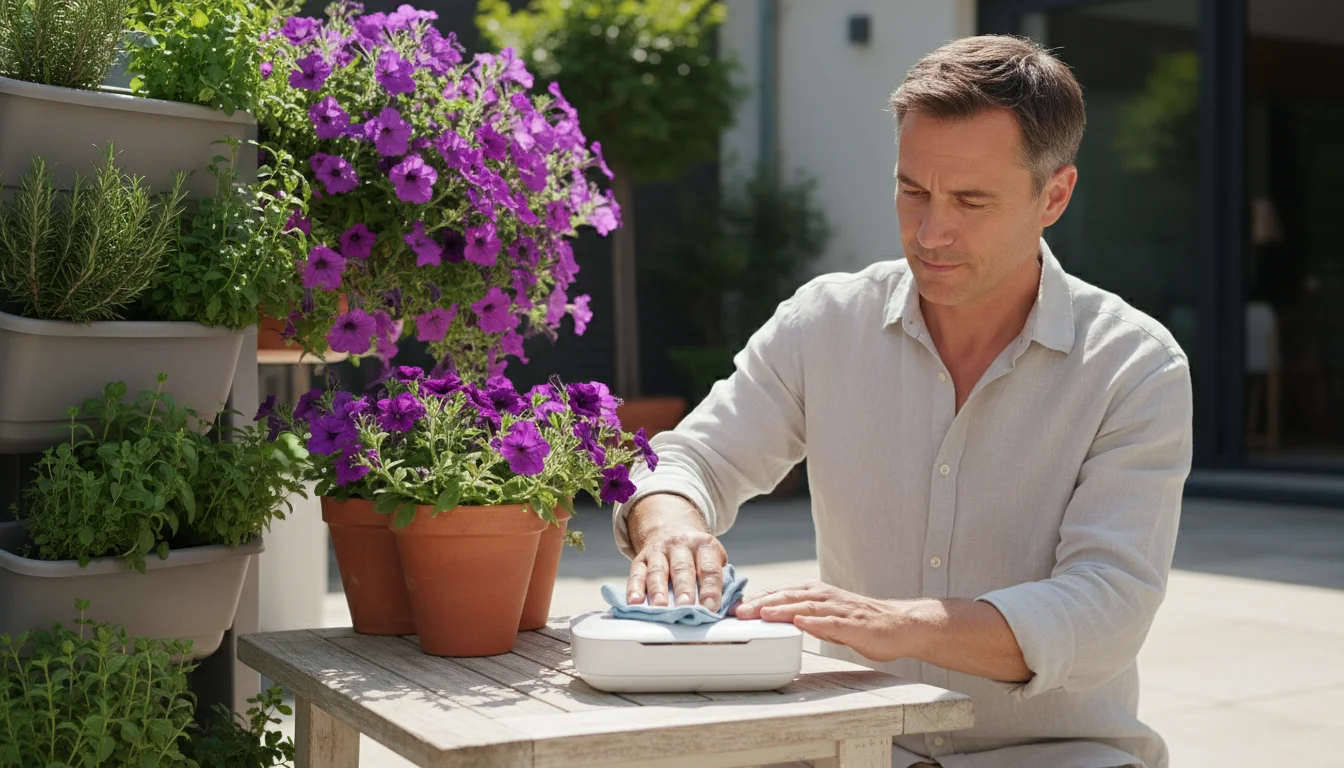
Keeping Your Garden Tech Optimal: Maintenance Tips
Just like your traditional hand tools, your smart garden sensors and apps require a little attention to perform their best. Proper maintenance ensures accuracy, extends the lifespan of your devices, and safeguards your data. Neglecting these steps can lead to inaccurate readings, system failures, and ultimately, less effective gardening. You protect your investment and maintain the reliability of your gardening support system through consistent care.
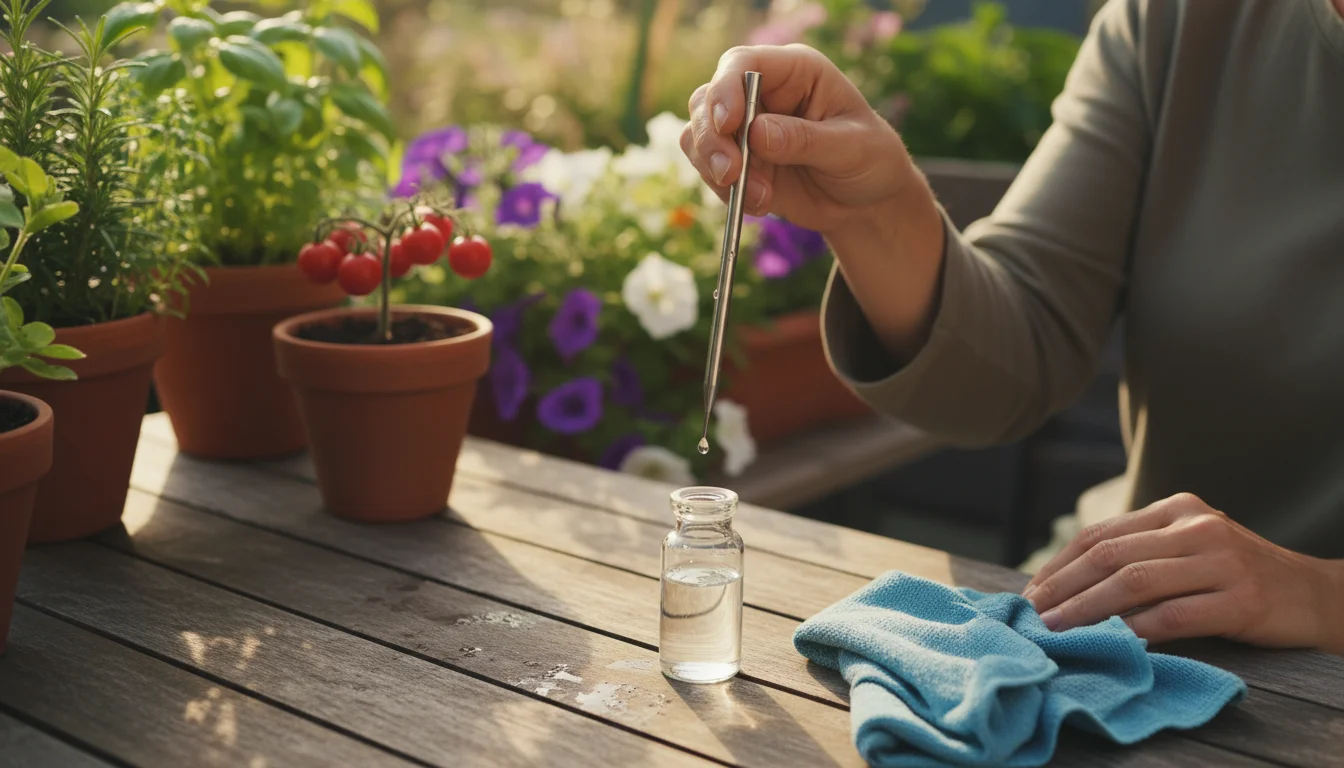
Sensor Calibration and Cleaning
Many sensors, especially those measuring pH or NPK, benefit from periodic calibration. Over time, environmental factors can cause sensors to drift, leading to inaccurate readings. Follow the manufacturer’s instructions for calibration, which often involves placing the sensor in a known solution (calibration solution) and adjusting its readings. Calibrate new sensors before their first use and then typically once or twice a growing season, or if you suspect inaccurate data. You ensure the data you rely on for decisions is trustworthy.
Cleaning sensors is equally important. Soil particles, mineral deposits from water, and algae can accumulate on probes, impairing their ability to take accurate measurements. Gently wipe probes with a soft, damp cloth after each use or at least weekly during active growing seasons. For stubborn deposits, a soft brush and distilled water work well. Avoid harsh chemicals or abrasive materials, which can damage the sensor’s delicate components. Store sensors in a clean, dry place, ideally with a protective cap if provided, to prevent damage to the probes.
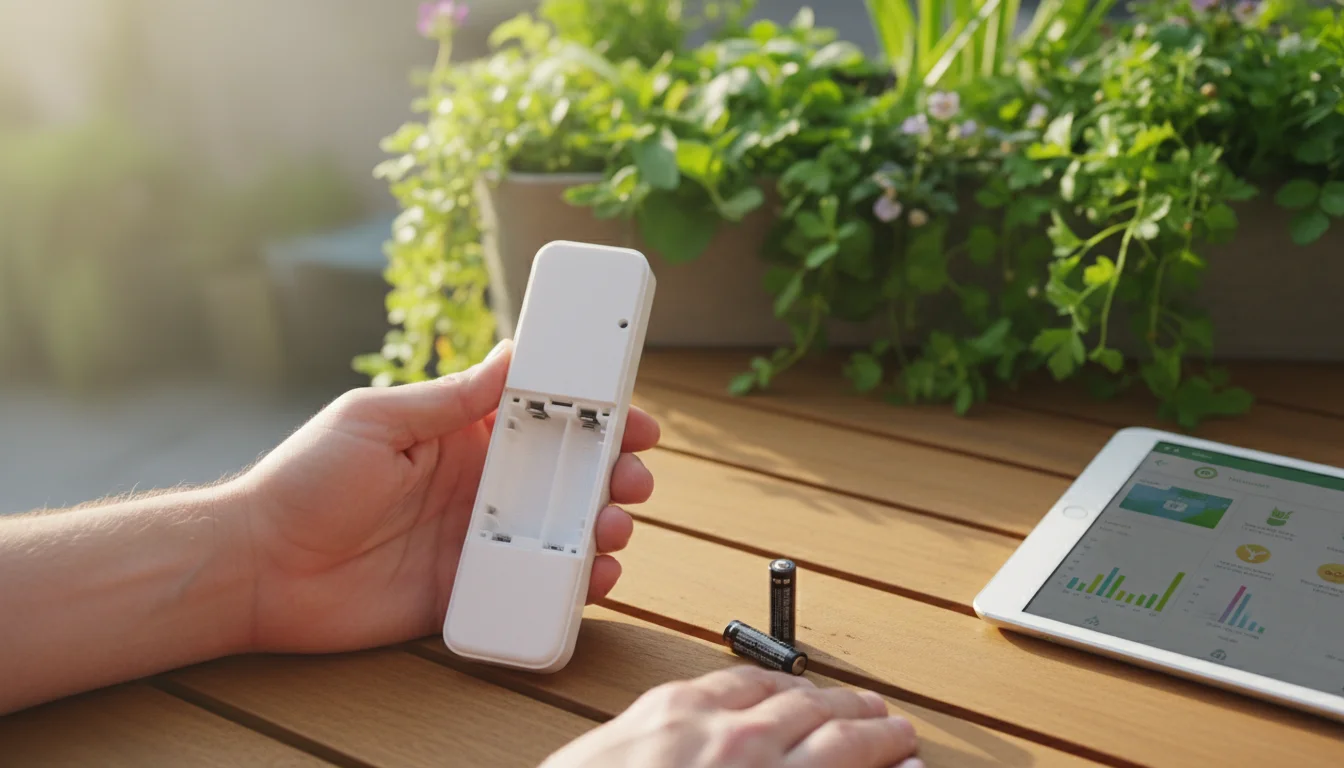
Battery Management and Software Updates
Most smart garden sensors are battery-powered. Monitor battery levels regularly, either through their companion app or by checking indicator lights on the device. Replace batteries proactively rather than waiting for them to fail, which can interrupt data collection at critical times. Use the type of batteries recommended by the manufacturer to ensure optimal performance and avoid damage. If storing devices for the off-season, remove batteries to prevent corrosion. You extend the life of your devices significantly by practicing good battery hygiene.
Software and firmware updates for both apps and smart devices are crucial for security, performance, and accessing new features. Enable automatic updates on your apps whenever possible. For smart controllers and sensors, regularly check the manufacturer’s website or app for available firmware updates. These updates often fix bugs, improve sensor accuracy, enhance security features, and add compatibility with newer operating systems. Neglecting updates can leave your devices vulnerable to security threats or cause them to function poorly. You ensure your tech remains reliable and secure by staying current.
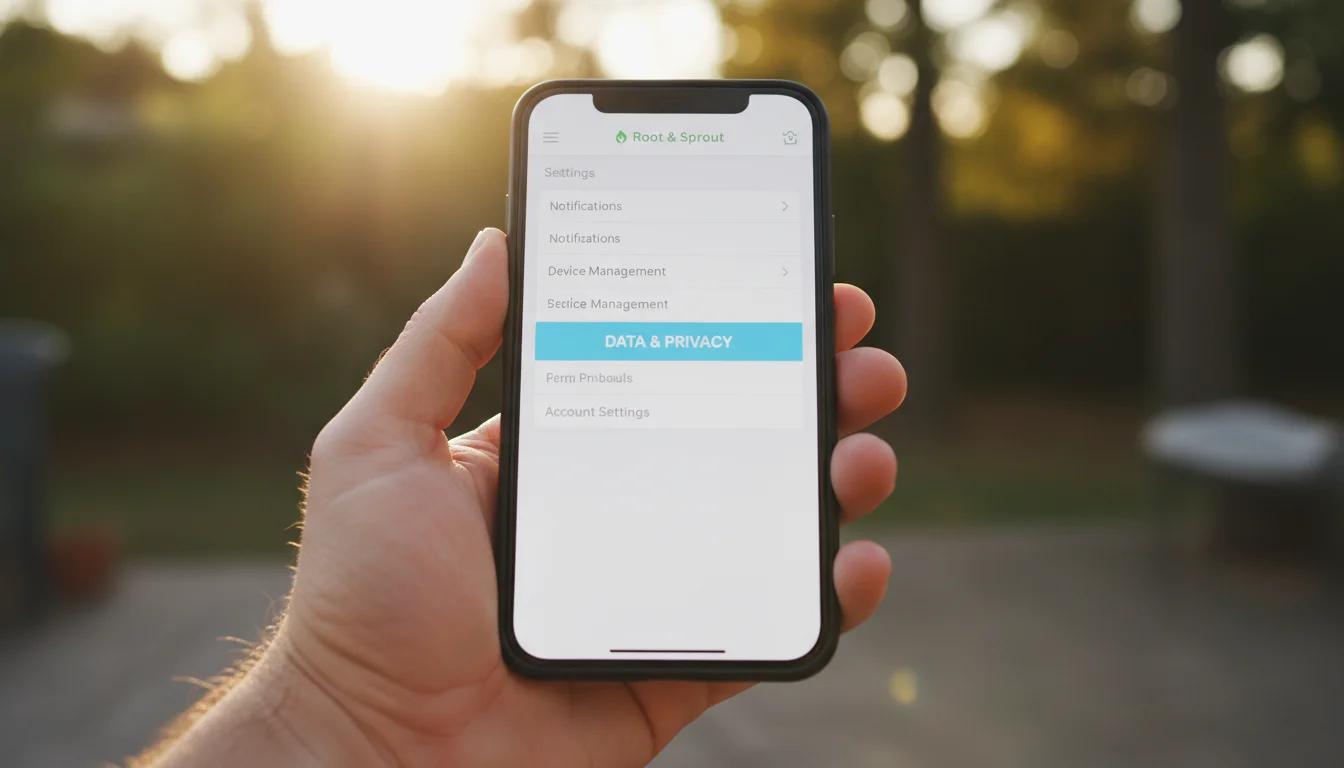
Data Privacy and Security in Smart Gardening
As you integrate more smart devices into your garden, you also introduce data collection and connectivity. Understanding data privacy and security practices becomes essential. You want the benefits of smart tech without compromising your personal information or opening your home network to vulnerabilities. Protecting your data allows you to fully enjoy the convenience and insights these devices offer.
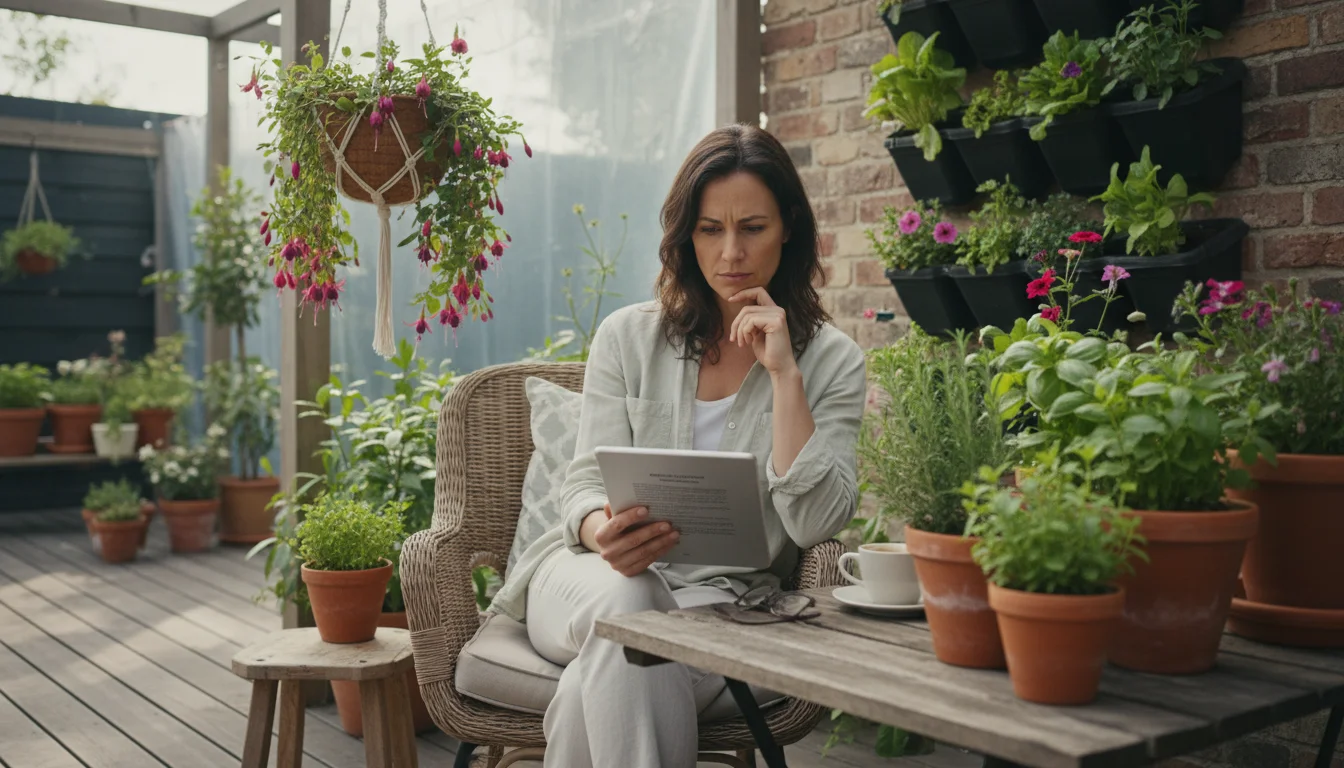
Understanding What Data is Collected
Before purchasing any smart garden device or downloading an app, understand its data collection policies. Most smart sensors collect environmental data (soil moisture, temperature, light) which is usually anonymized and aggregated to improve services. Some apps might request access to your location for hyper-local weather. Others might ask for personal details during registration. Review the privacy policy for each device and app. You need to know what information they gather, how they use it, and if they share it with third parties. If a privacy policy seems vague or overly permissive, consider an alternative product. You make informed choices about your data by reading the fine print.
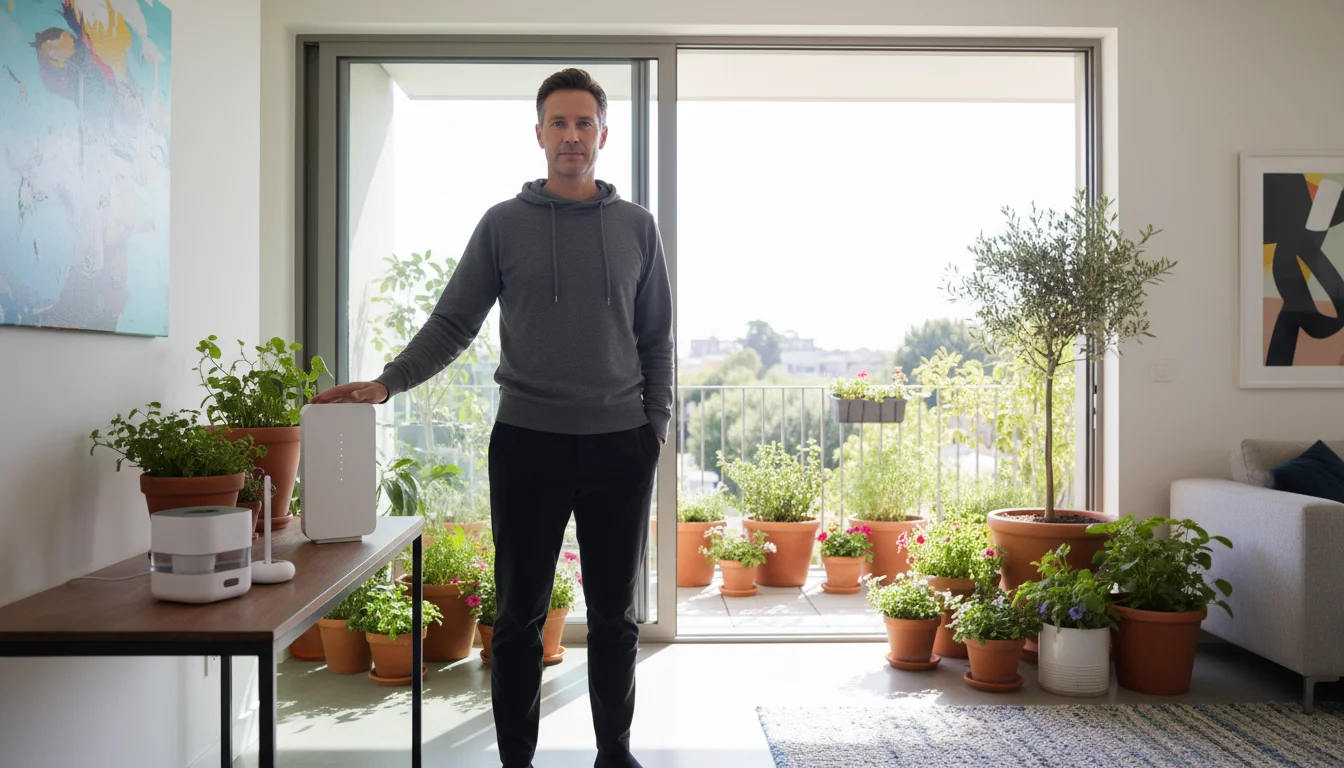
Securing Your Devices and Network
Your smart garden devices connect to your home Wi-Fi network. Treat them like any other connected device in your home. Ensure your Wi-Fi network uses a strong, unique password. If your router has a guest network feature, consider connecting your smart garden devices to the guest network, which can provide an extra layer of isolation from your main home network. Regularly update your router’s firmware, as these updates often include critical security patches. You create a secure environment for all your smart devices, including those in your garden, by maintaining strong network security practices.
For individual devices, change default passwords immediately if they come with one. Use strong, unique passwords for any online accounts associated with your garden apps or controllers. If a device offers two-factor authentication (2FA), enable it. This adds a crucial second layer of security, making it significantly harder for unauthorized individuals to access your accounts. You significantly reduce the risk of security breaches by taking these simple, proactive steps.
For additional guidance on smart device security, refer to resources like the
Federal Trade Commission’s (FTC) guidance on IoT device security.
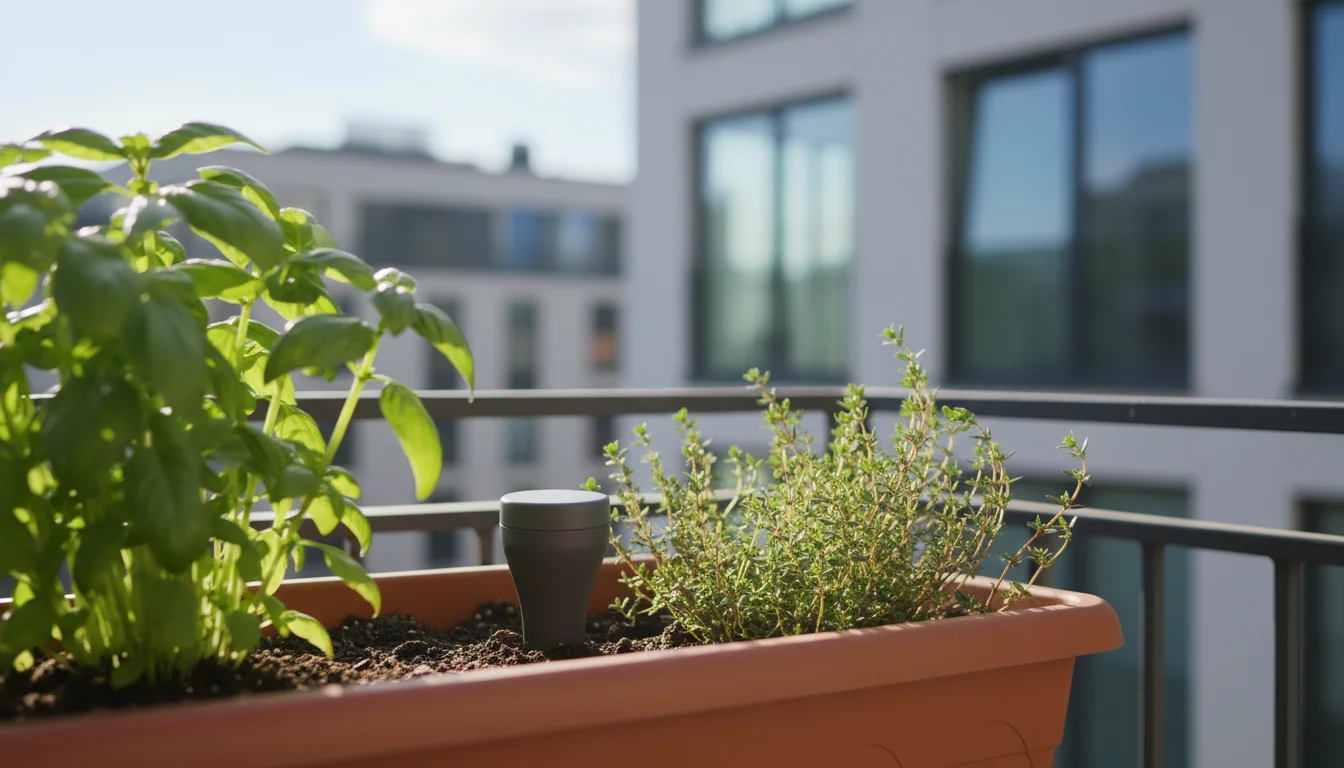
Choosing Durable and Compact Garden Tech
Small-space gardening means every tool, physical or digital, must earn its spot. When selecting garden tech, consider not only its features but also its physical footprint, durability, and suitability for outdoor conditions. You need devices that withstand the elements, fit neatly into your limited space, and provide long-term value.
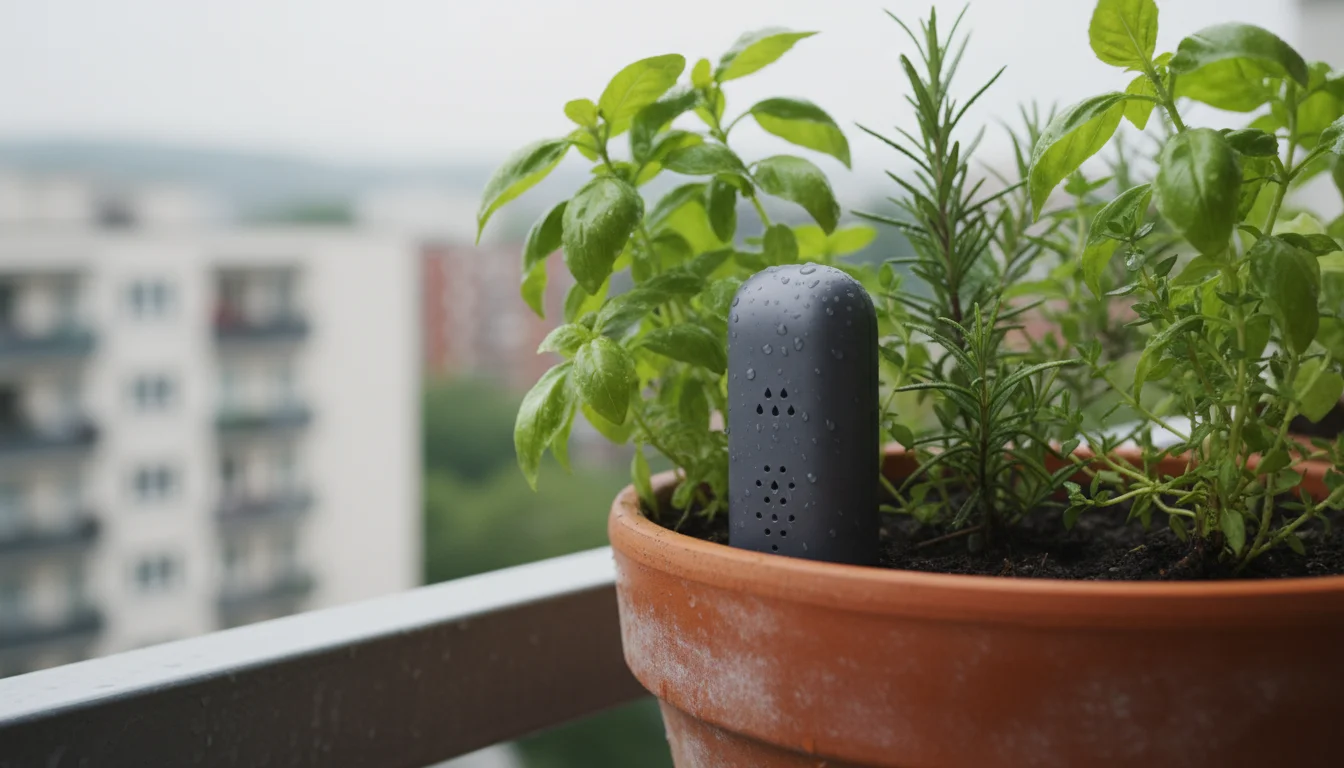
Weather Resistance and Build Quality
Garden sensors live outdoors. This means they face sun, rain, wind, and temperature fluctuations. Look for devices with an IP (Ingress Protection) rating, which indicates their resistance to dust and water. An IP65 rating, for example, means the device is dust-tight and protected against water jets from any direction. An even higher rating, like IP67, signifies protection against temporary immersion in water. You ensure your sensors continue to function reliably through various weather conditions by choosing appropriately rated devices.
Beyond ratings, assess the build quality. Are the materials robust? Is the casing sealed? Do wires have adequate protection? Read reviews specifically mentioning durability and performance in real-world outdoor environments. A flimsy sensor might be cheaper initially, but it costs more in replacements and lost data over time. You save money and frustration by prioritizing robust construction from the outset.
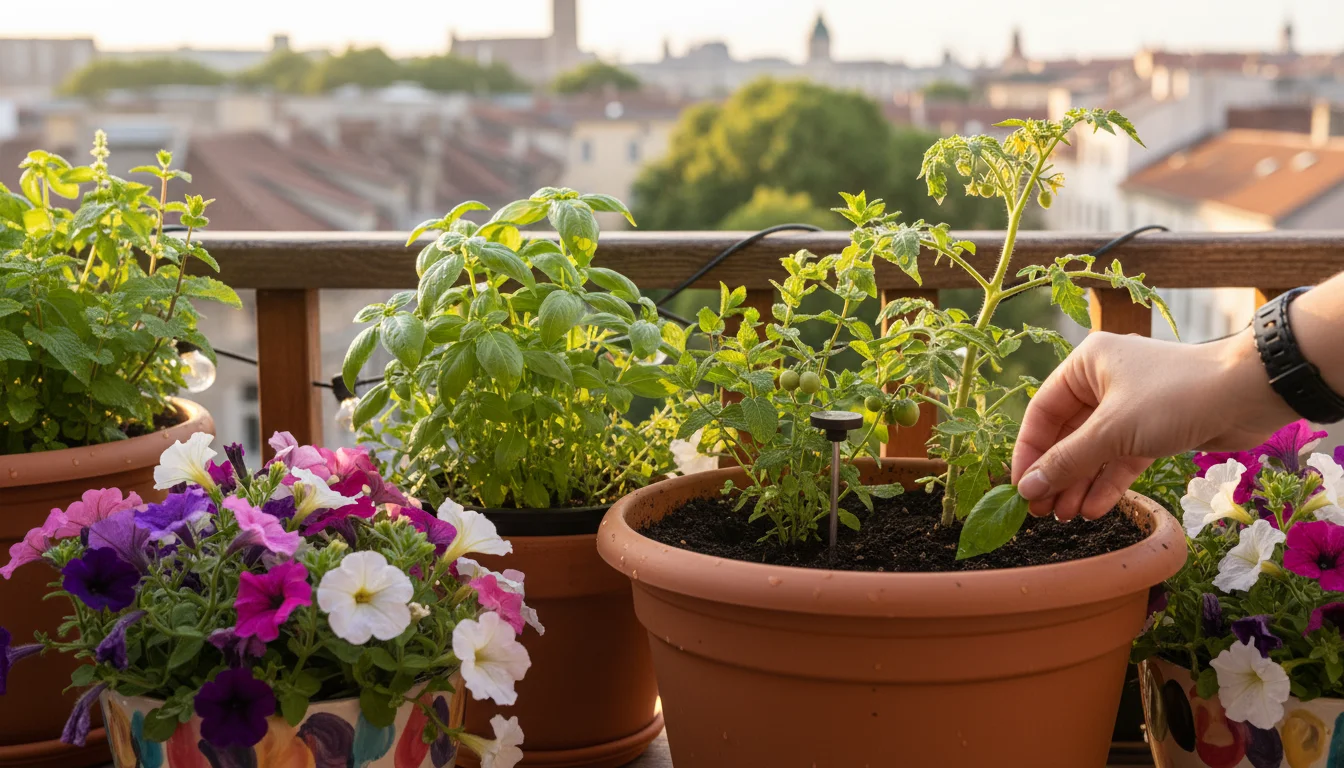
Compact Design and Battery Life for Small Spaces
In a small garden, size matters. Choose sensors and controllers that are discreet and do not take up valuable space or look obtrusive. Many modern soil moisture sensors are small probes that blend into the pot. Smart controllers are often wall-mounted or can sit unobtrusively near your watering source. You maintain the aesthetic appeal of your small garden by selecting compact designs.
Battery life is another critical factor. You do not want to constantly replace batteries or recharge devices, especially if they are placed in hard-to-reach areas. Look for sensors with long battery lives, measured in months or even a year, using energy-efficient wireless protocols like Bluetooth Low Energy or specialized garden network protocols. Solar-powered options are also excellent for continuous operation without battery changes. You minimize maintenance chores and ensure continuous data collection by prioritizing extended battery life.
When you consider these factors – weather resistance, build quality, compact design, and battery life – you select garden tech that not only performs its function well but also integrates seamlessly and durably into your small-space gardening environment. You invest in tools that simplify your life, rather than adding new hassles.
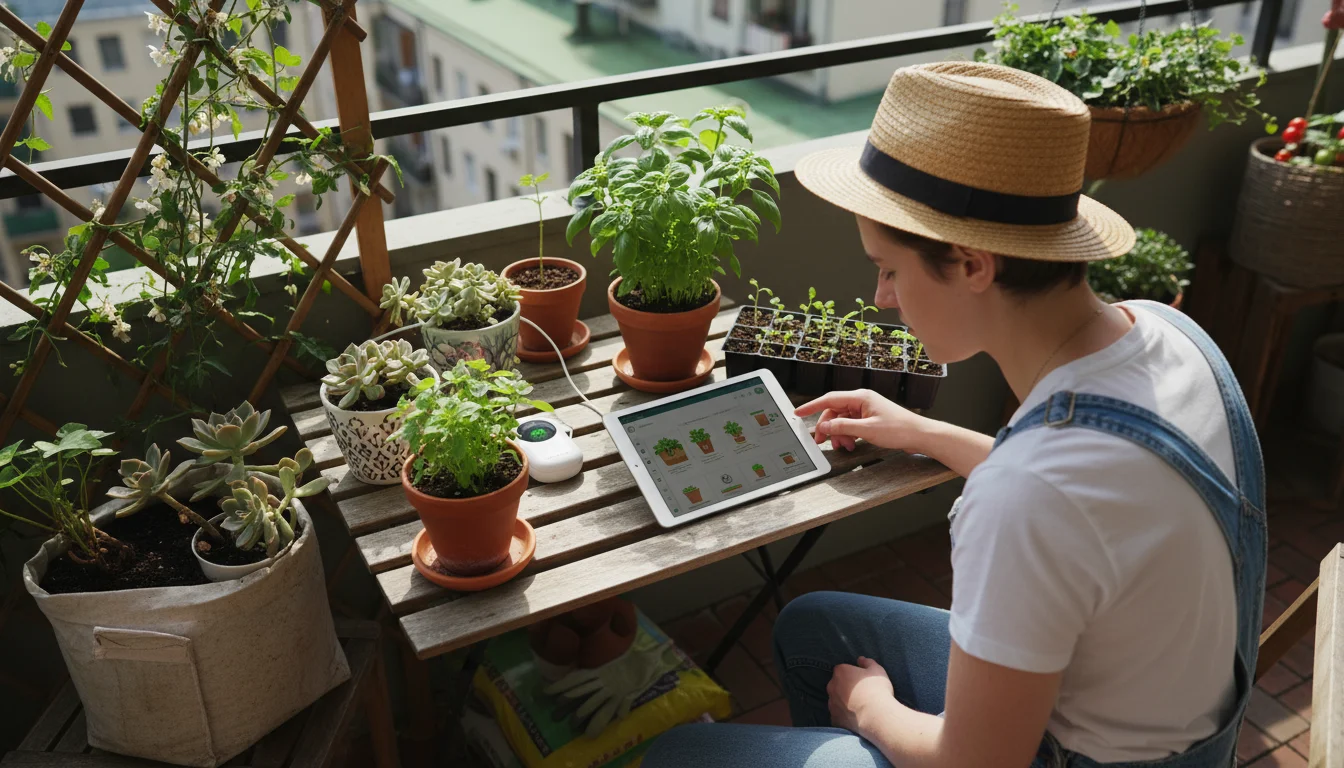
Garden Tech Feature Comparison
Choosing between different types of garden tech can feel overwhelming. This table helps you compare common features and use cases for the most popular garden apps and smart garden sensors, allowing you to identify what best suits your needs and budget. You can quickly see which technology addresses your specific gardening challenges.
| Tech Type | Primary Function | Key Features | Best For | Considerations |
|---|---|---|---|---|
| Plant ID Apps | Identify unknown plants, get care info | Image recognition, species database, care guides, community forum | Quick identification, learning new plants, troubleshooting diseases/pests | Accuracy varies, some features paywalled, requires good photo quality |
| Garden Planning Apps | Design layouts, track progress, set reminders | Virtual garden design, planting calendars, journaling, crop rotation advice | Optimizing small spaces, remembering tasks, tracking harvest data | Learning curve for complex features, regular data entry needed |
| Soil Moisture Sensors | Measure water content in soil | Real-time data, app integration, alerts, often battery-powered | Preventing over/under-watering, water conservation, precise hydration | Placement critical, requires calibration, battery replacement |
| pH/NPK Sensors | Measure soil acidity/alkalinity and key nutrients | Digital readings, data logging, specific plant pH ranges | Diagnosing nutrient deficiencies, optimizing soil for specific plants | Less precise than lab tests, requires calibration, often more expensive |
| Light Sensors | Measure light intensity and duration | PAR/Lux readings, daily light integral (DLI), shade mapping | Optimizing plant placement, matching plants to light conditions, assessing sun exposure | Shadows can skew readings, accurate placement necessary |
| Smart Irrigation Controllers | Automate watering schedules | Wi-Fi connectivity, weather integration, remote control, zone management | Automated watering, water conservation, managing multiple watering zones | Requires existing irrigation setup, initial setup complexity, Wi-Fi reliability |
| Environmental Sensors (Air Temp/Humidity) | Monitor ambient air conditions | Temperature, humidity readings, historical data logging, alerts | Optimizing microclimates, preventing fungal issues, protecting sensitive plants | Best for enclosed spaces (mini-greenhouses), battery life varies |
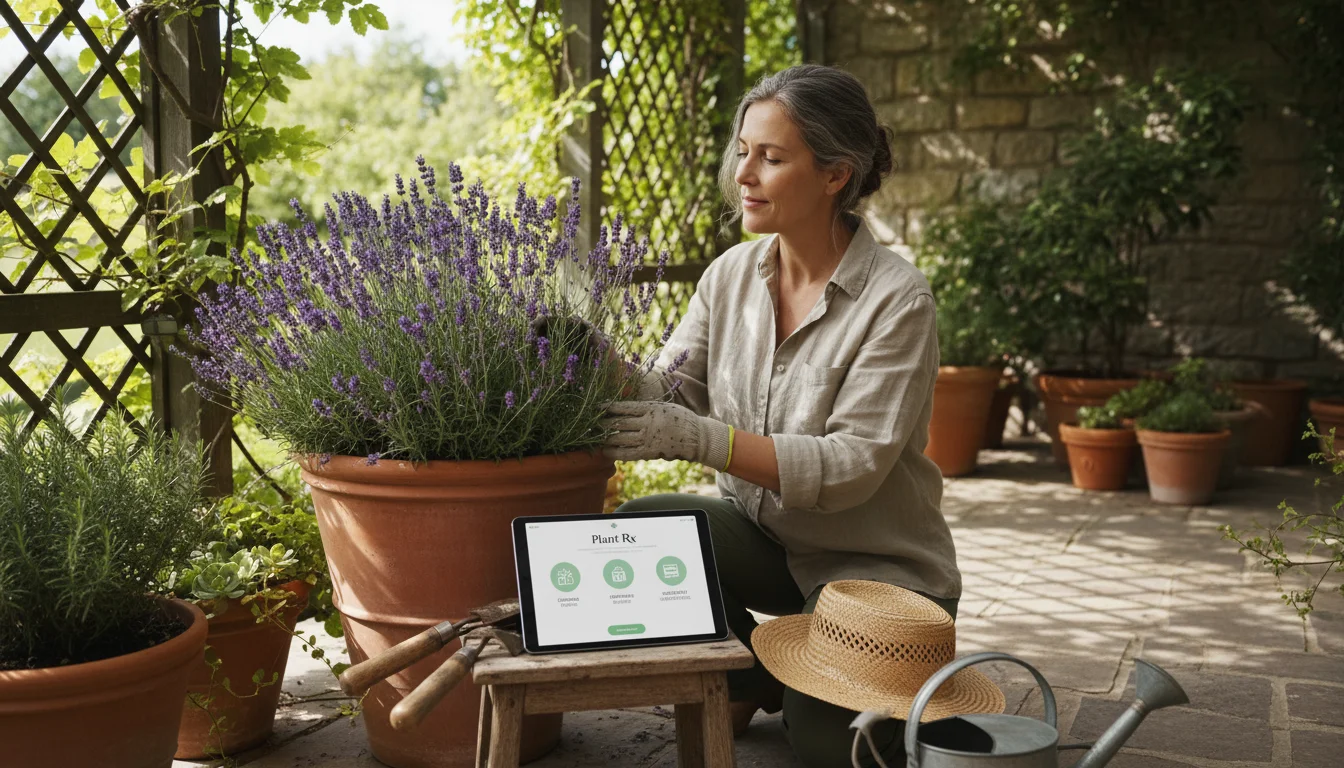
Frequently Asked Questions
Do I need all these garden apps and sensors for my small garden?
No, you do not need every piece of tech available. Start by identifying your biggest gardening challenges. If you struggle with watering, a soil moisture sensor is a great first step. If you cannot identify pests or diseases, a plant diagnostic app offers significant value. Choose one or two tools that directly address your pain points and expand as you find what truly helps your specific gardening style. You integrate tech strategically, focusing on practical benefits.
Are smart garden sensors difficult to set up?
Most modern smart garden sensors and apps are designed for user-friendliness. Setup typically involves inserting batteries, downloading a companion app, and following on-screen instructions to pair the device via Bluetooth or Wi-Fi. While some smart irrigation controllers might require basic wiring knowledge, many soil sensors are plug-and-play. You can generally expect a straightforward setup process, often completed within minutes.
How accurate are these sensors compared to professional lab tests?
Smart garden sensors provide excellent real-time data for ongoing monitoring and quick decision-making. However, they are generally less precise than professional lab tests, especially for complex nutrient analysis. Think of them as giving you a good general indication of trends and immediate issues. For highly detailed and precise measurements, especially before starting a new garden or addressing persistent, severe problems, a professional soil test remains the gold standard. You use sensors for daily insights and lab tests for foundational understanding.
Can smart tech really save me water in a small space?
Absolutely. Overwatering is a common problem in small-space gardening, leading to wasted water and unhealthy plants. Soil moisture sensors ensure you water only when needed, while smart irrigation controllers adjust schedules based on weather and plant types. This precision prevents unnecessary watering cycles and reduces runoff. Studies, such as those by the
U.S. Environmental Protection Agency’s WaterSense program,
demonstrate that smart irrigation can reduce outdoor water use by significant amounts. You conserve water effectively by leveraging these technologies.
What is the most important feature to look for in a plant identification app?
The most important feature is a large, accurate, and regularly updated plant database. This directly impacts the app’s ability to correctly identify plants. Look for apps with a strong user community, as collective input often improves accuracy. Offline functionality is also beneficial, allowing you to identify plants even without an internet connection. You ensure reliable identification by prioritizing database quality and accessibility.
For reliable gardening information and safety guidance, see
Oregon State Extension — Garden & Home Publications,
Missouri Botanical Garden — Watering Tips, and
National Safety Council — Home & Garden Safety.
Disclaimer: Follow manufacturer instructions and local regulations. Protect your digital privacy, secure your devices, and handle any physical components of smart tech carefully. Keep all garden tools, smart or traditional, away from children and pets.
